The Arab World Part 2: The remote peninsula of Musandam
Mysterious Musandam: Rugged Mountains and Dramatic Fjords (34)
As soon as we cross the border into Oman by bike, we find ourselves in another world. The high-rise buildings of the Emirates give way to low-rise traditional houses, which architecturally blend into the surroundings. The heavy traffic is replaced by herds of goats and the large malls disappear and make room for small supermarkets with a limited product range. We rub our eyes, can borders really transport you into a different environment that quickly? Normally, the next country announces itself already before the border, but not this time. We are suddenly alone on the road and it becomes incredibly quiet. Finally, we can breathe again. We smile at each other and know immediately that coming to Oman was the right decision.
We're on our way to the Omani exclave of Musandam, which lies in the very north of the country, on the Strait of Hormuz, which connects the Persian or Arabian Gulf with the Gulf of Oman. An area of just under 100 km separates the United Arab Emirates (UAE) Musandam from the rest of Oman. The word Musandam alone sounds like the mysterious Orient to us and we are curious about this isolated corner of the country with its raw nature, barren landscapes and fjords that are said to be reminiscent of Norway. And we are generally very curious about exploring Oman, a country that is becoming an increasingly popular travel destination and is supposed to be very different from the Emirates. A state that hasn’t lost its cultural identity and an Arab country without Dubai’s gigantism. The first impression doesn’t disappoint, as we are surrounded by wild natural beauty immediately after crossing the border. How we have missed that in the Emirates.
We are overwhelmed by the views along the coastal road into the provincial capital Khasab. A stretch of smooth tarmac winds its way between steep cliffs and an unspoiled coastline. We can pitch our tent directly on the beach, what a great start into our Oman adventure. The beach is very clean and there are no plastic bottles floating in the sea. We even get to see a manta ray in knee-deep water. The water is so full of marine life, that we don't even dare to go swimming. But first we have to settle in this new country anyways. So, let's take a quick look at the Sultanate of Oman, a country slightly larger than Germany.
Rapid transformation in the land of frankincense and half a century of Qaboos
If you read about the Sultanate of Oman, you are sure to come across the name Qabos Ibn Said (1940 - 2020), better known as Sultan Qaboos. The popular sultan ruled Oman for almost 50 years and carefully led the country into the modern age. This was necessary, because Oman had long lagged behind its neighboring countries economically and was one of the least developed countries in the world. Until the 1970s, there were only 11 km of asphalt roads and 98% of the people were illiterate. This all changed when Qaboos Ibn Said overthrew his father from the throne in 1970, supported by the British. He began to build a modern state with the help of the revenues from oil production while still maintaining the culture and heritage. The then young sultan brought guest workers from Asia to Oman, who now make up more than half of the almost five million inhabitants. He focused on reforms, education and the expansion of the infrastructure while preserving the cultural identity and thus gained a popularity throughout the country that continues to this day.
Today, almost 90% of Omani men and 70% of Omani women can read and write and probably no other head of state in the Gulf region has supported women as much as Sultan Qaboos. Omani women can travel, study and work in a wide variety of professions. Almost half of the students are women and they often outnumber their male fellow students in fields of study such as engineering and medicine. The transformation in Oman has been astonishingly rapid. Where once schools consisted of a tent with a palm roof and writing on camel bones with charcoal, today there are modern school buildings with internet access and air conditioning.
Well-developed roads lead to remote villages and most Omanis own a house, as anyone can ask for a plot of land and generally receives it. However, one has to build on this land within two years or at least put a few stones there. Sultan Qaboos ruled almost continuously until his death in 2020 and his reign is often referred to as the "Renaissance of Oman". His exemplary approach to modernization without abandoning traditions prepared Oman strategically well for the future. Under Qaboos, "Omanisation" was advanced in order to push forward replacing foreign workers with locals. And today you can see the Omanis working in many areas of society compared to the Emirates. And we also meet various locals who make a living as fishermen or produce traditional handicrafts. Nevertheless, most parents want their children to have a university degree and prefer to see them in the military and in administration instead of blue-collar jobs. In the industries that seem less attractive to Omanis, it’s mainly people from India, Pakistan and Bangladesh who are working today. They earn more than in their home countries, but much less than the locals.
Youth unemployment is just one problem that Sultan Qaboos' successor, his cousin and former minister of culture, Sultan Haitham ibn Tariq, has to deal with. In addition, the revenues from oil production are not enough to finance the lavish government spending. The economy will have to continue to diversify and it remains open how the life of today’s young generation will look like in the future.
But at first, we see nothing of those everyday problems, as we’re too busy absorbing the beauty that surrounds us. But then we quickly return from our Oriental fairy tale to the reality, as we are hungry and are looking for a supermarket. Unfortunately, we quickly realize that there is a siesta time in Oman, making it impossible to shop in smaller towns after midday. In general, we see almost no people on the streets, but heaps of goats. Shortly afterwards, we also find out where those goats come from, namely from Iran.
Goat smuggling and dolphins in a dramatic fjord landscape
We arrive at the port of Khasab and see numerous small motor boats whizzing across the sea. They come from Iran and smuggle goats and sheep from Iran to the Emirates in exchange for electronic goods that are sanctioned in Iran. A semi-legal smuggling operation, but one that takes place in broad daylight. The port is bustling with activity and we see many trucks with the smelly and bleating smuggled goods on the loading area.
Khasab (approx. 12'000 inhabitants) is the main town of Musandam and is connected to the UAE by road. The rest of Oman can only be reached by a 4-hour ferry that does not run daily. Unfortunately, we arrive on a departure day and have to spend five days in Musandam until the next ferry leaves. As we only have a tourist visa for 30 days, we didn't want to spend that much time in Musandam, but instead wanted to see more of the rest of the country. We make the best of the situation and explore the quiet streets and visit the Khasab Castle with its massive stone towers and fine crenellation. It was built in the 17th century by the Portuguese. And in the case you're wondering - the Portuguese ruled the Strait of Hormuz for about 200 years.
But now it’s time to turn our attention to Musandam's main attraction: the impressive fjord landscape. We book an excursion on a traditional Arabian wooden boat, a dhow, and leisurely sail through the spectacular Khor Ash Sham, the longest and most dramatic of all the inlets. Dolphins keep following us and we learn that they can reach speeds of up to 60 km/ h. The water is crystal clear and we spot rays, starfish and colorful fish. It feels like a holiday.
Remote fishing villages, an abandoned island and an almost romantic night
Approximately 30,000 people live on the dramatic peninsula Musandam. Due to its remoteness, the region was not important for a long time and until the 1980s there was no radio or telephone. And there is one thing that still doesn’t exist in Musandam: hustle, bustle and crowds of tourists. Tourism here is still relatively young, as the peninsula has only been open to tourists since 1992, before that it was a restricted military area. The people of Musandam still live mainly from fishing and agriculture.
From our dhow we get to see some very remote fishing villages where Kumzari, which belongs to the Iranian language family, is still spoken. These villages are only accessible by boat and are inhabited by shepherds' and fishermen's families during the milder winter months. In summer, the families move to Khasab when the heat in the fjord becomes unbearable. The villages consist of only a few houses and are built directly on the coastline. The children take the boat to Khasab to go to school. Imagine commuting to school every day accompanied by dolphins... who wouldn't want to grow up like that, surrounded by such untouched and pristine nature?
We visit the tiny Telegraph Island in the middle of the fjord by kayak. In 1864, The British laid here the first underwater telegraph cable from India to Iraq. But the island was abandoned after only five years, because the loneliness there was unbearable for the stationed British and there was not a pub in sight. The ruins can still be seen today. We look at the mountains around us, dotted with acacia trees and we see a manta ray moving elegantly through the water. It’s breathtakingly beautiful. We spend the night on soft cushions on the open deck of the dhow and enjoy the peace and the gentle lapping of the waves. But it’s not quite as romantic as you might imagine, because our two boat guides are spending the night close to us. They come from the same small village in India and have come to Oman together to earn money to support their families back home. We remember the many guest workers in the Emirates and think that they definitely have it better here in Oman.
A different side of Musandam: Mountain Safari into the Hajar Mountains
Back in Khasab, a complete contrast awaits us as we take a jeep tour on a gravel road up to Jebel Harim (2087 m), the highest mountain in Musandam. Deep gorges and rock faces surround us and then suddenly we are standing in front of the As Sayh Plateau, a green plateau with small villages with stone houses. Donkeys and sheep graze in the fields and meadows and date and banana palms flourish. In the past, this area was under the sea and when you know where to look, you can recognize fossils of shells and fishes on the bare rocks, a fascinating treasure of the past. We have never seen anything like this before.
Our last stop is Khor Najd with probably the most famous view in Musandam with the switchback road winding steeply down to the fjord. In the evening, we pitch our tent again on the house beach of Khasab, the beautiful Bassa Beach. Our five days in Musandam pass quickly and we were able to get a first insight into the Omani culture. We are thrilled by the contrast between the fjords and the mountains and can definitely recommend visiting the otherworldly destination Musandam. We cycle to the harbor and take a seat in the ferry cabin next to the women and their children. The men are also on board, but are sitting in a separate area. We’ll see this separation of the sexes more often in the Arab world, even during joint excursions. We take a last look at the picturesque fjords of Musandam and sail along the Iranian smugglers' boats with their lively cargo towards the Omani coast, to Shinas. In the next blog, we'll take you on a scenic route over the mountains and we'll reveal how people used to fight off enemies with dates.


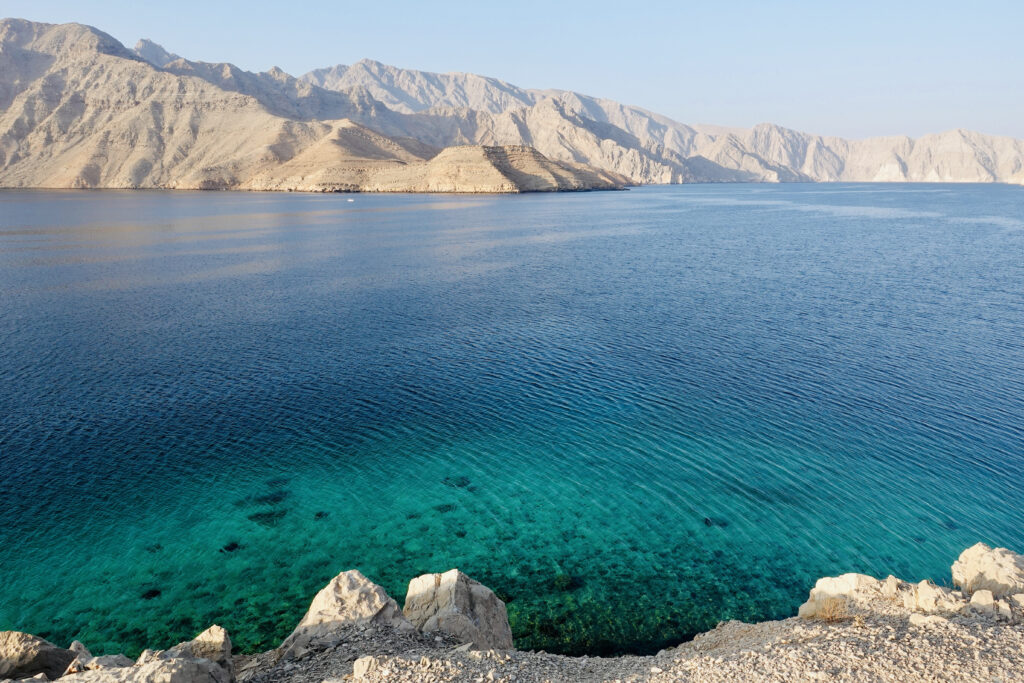

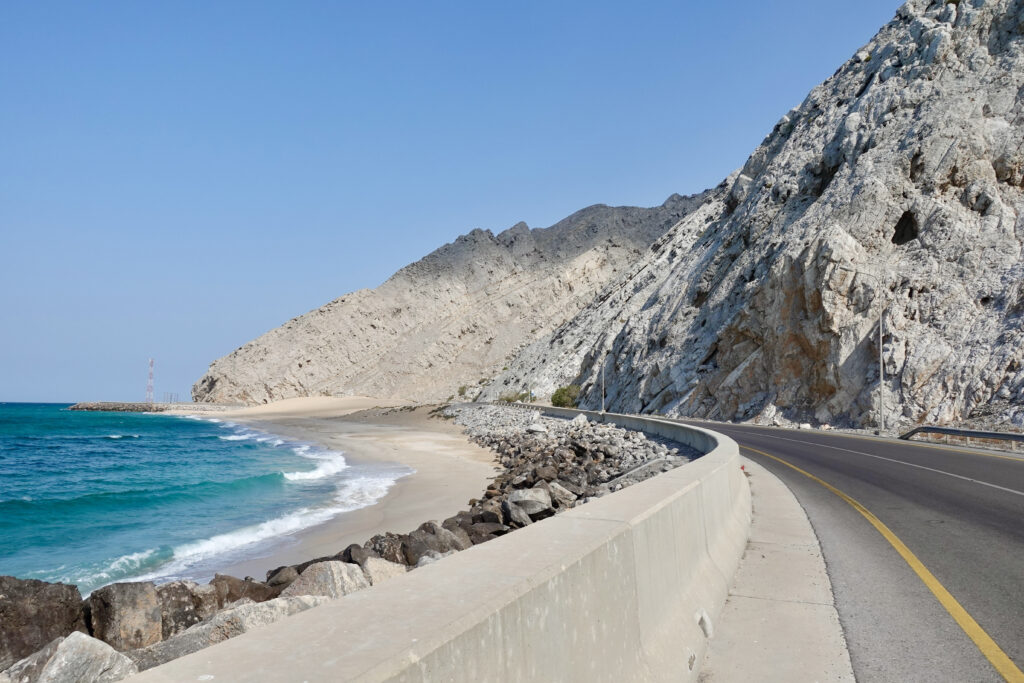
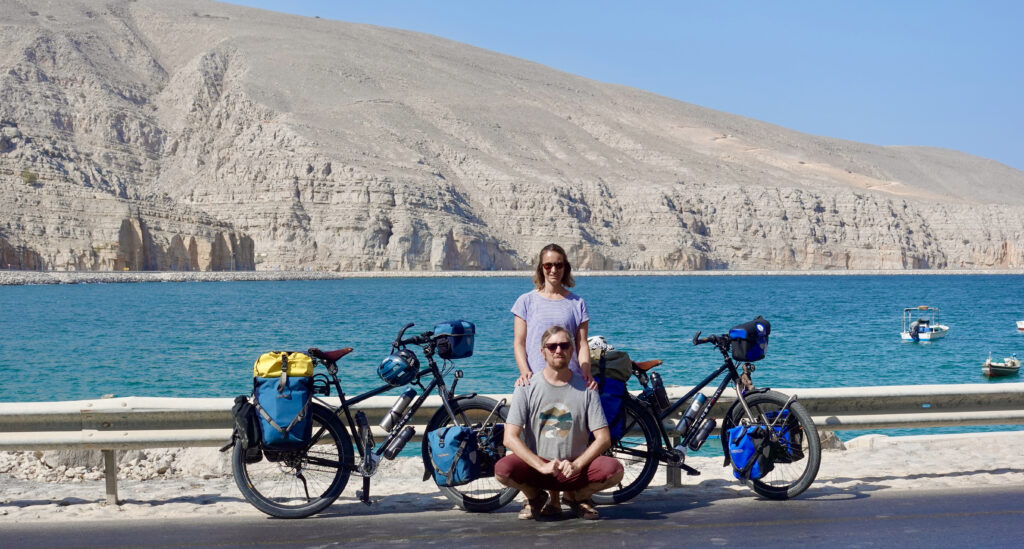
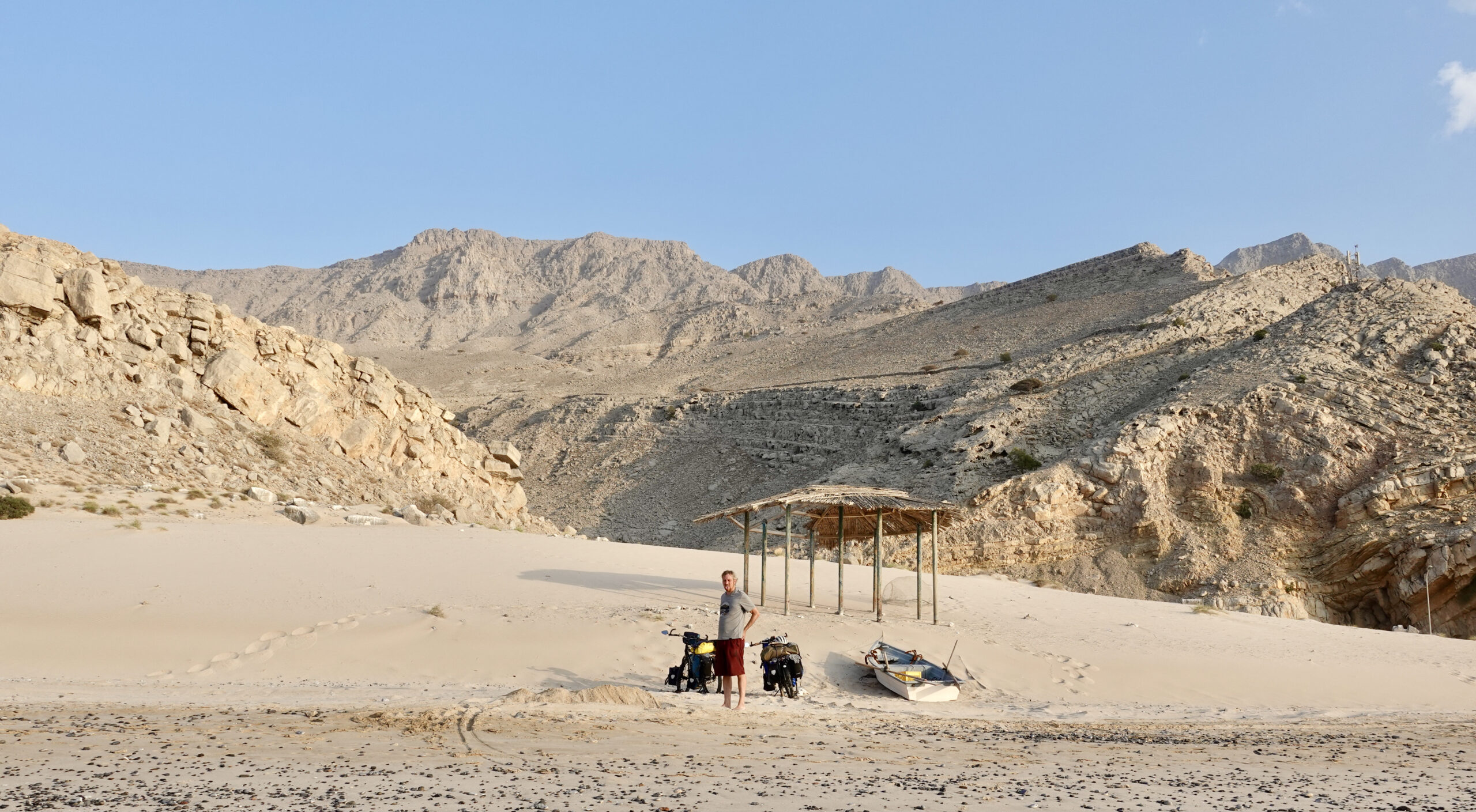
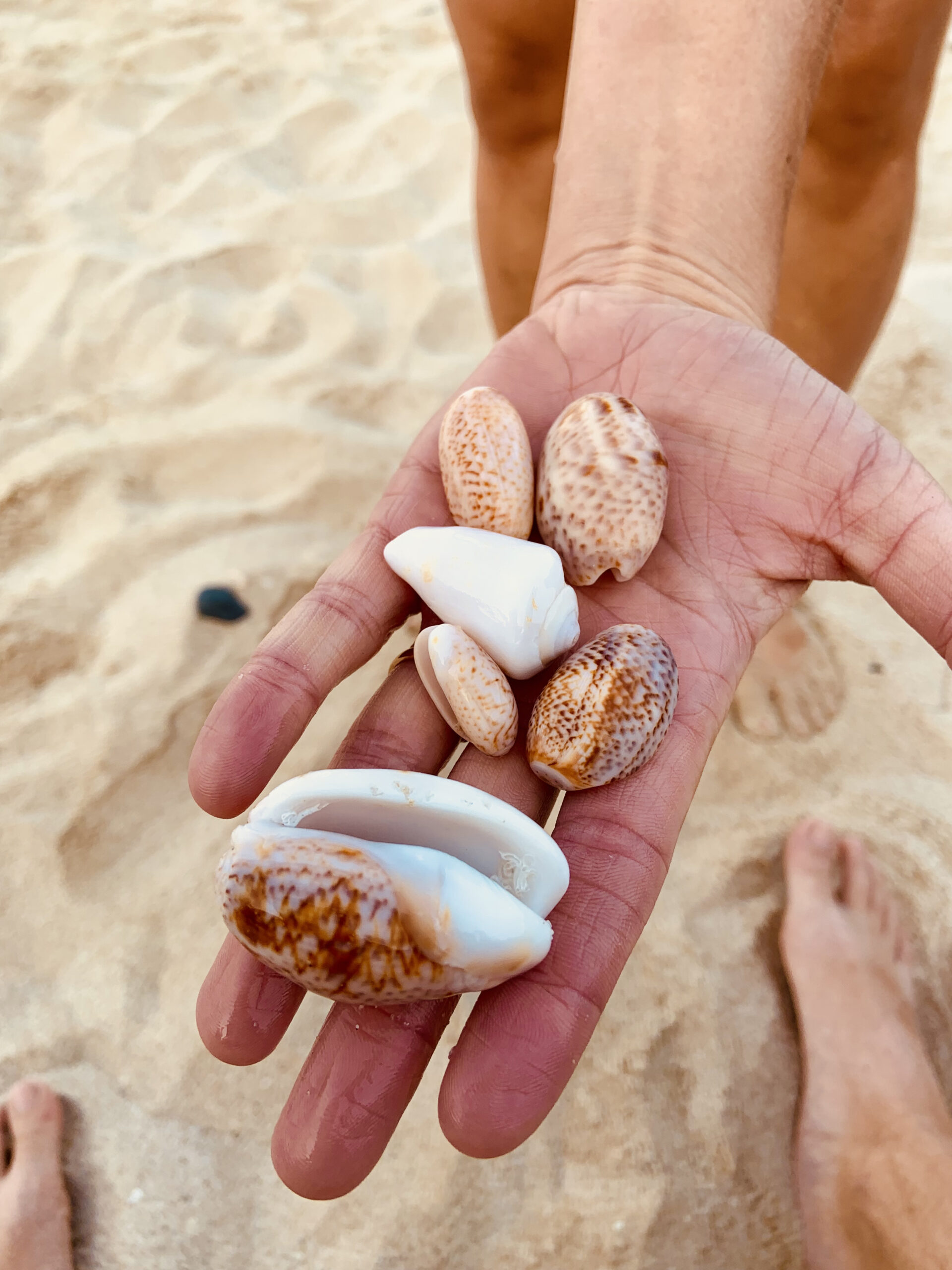

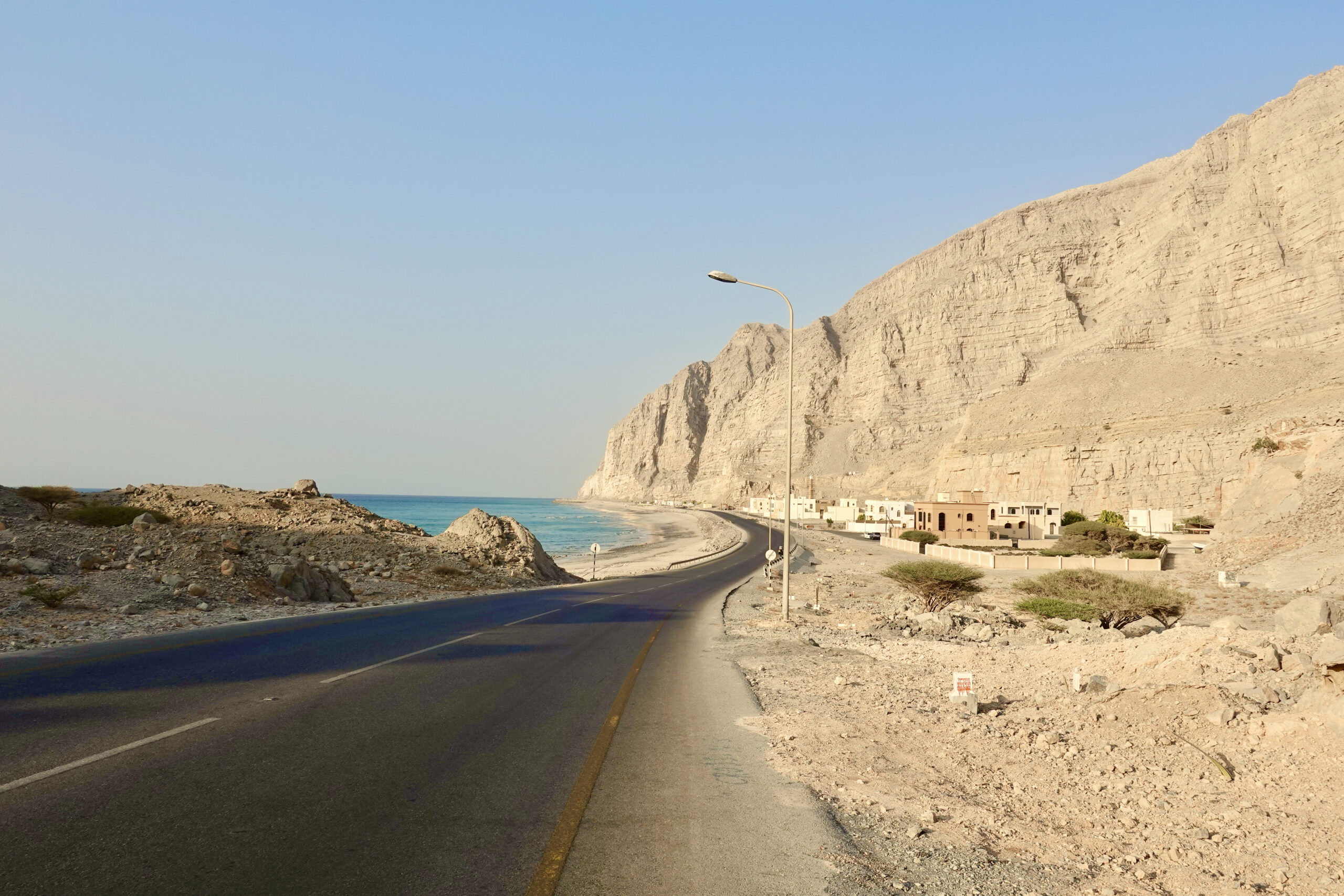
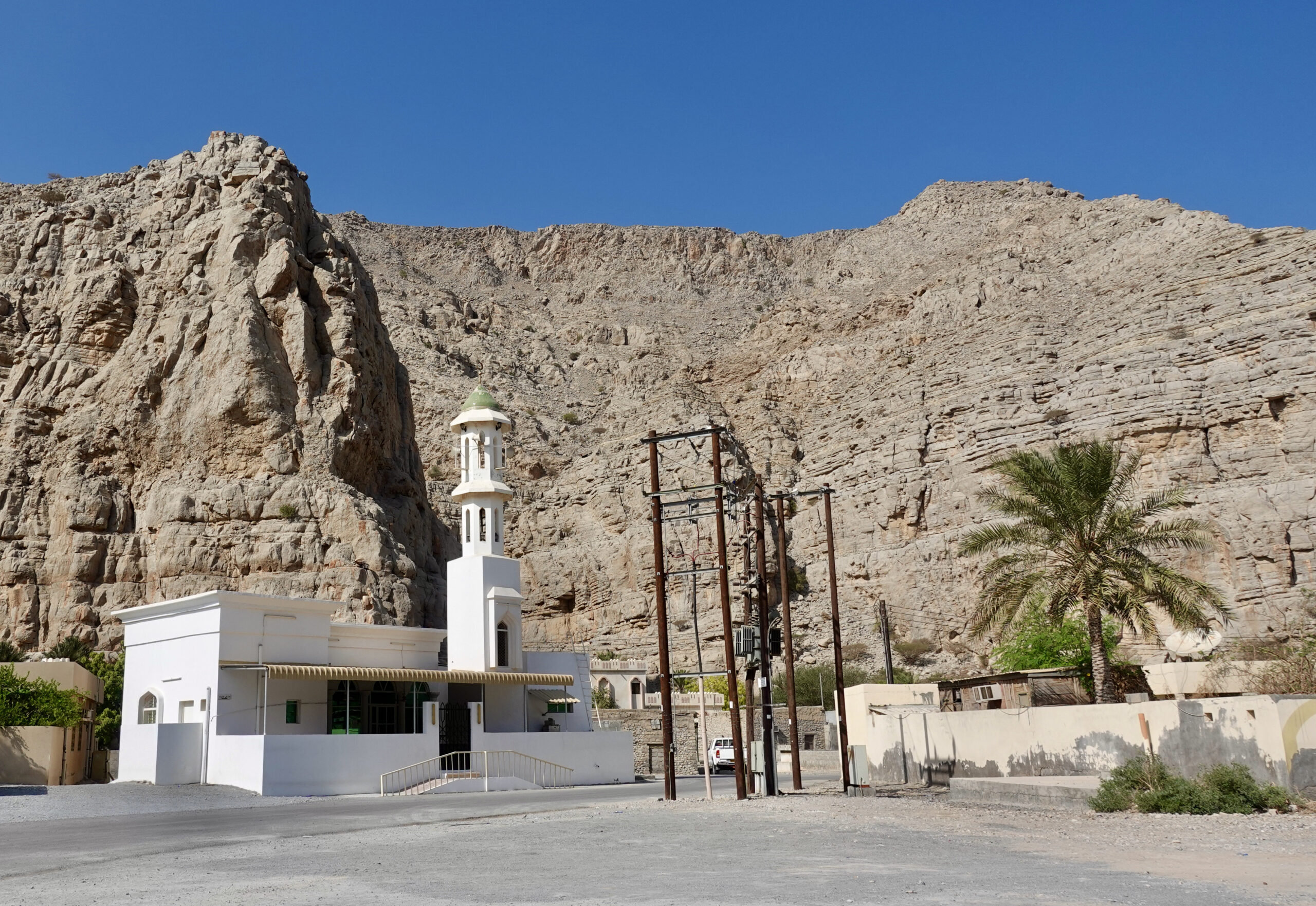
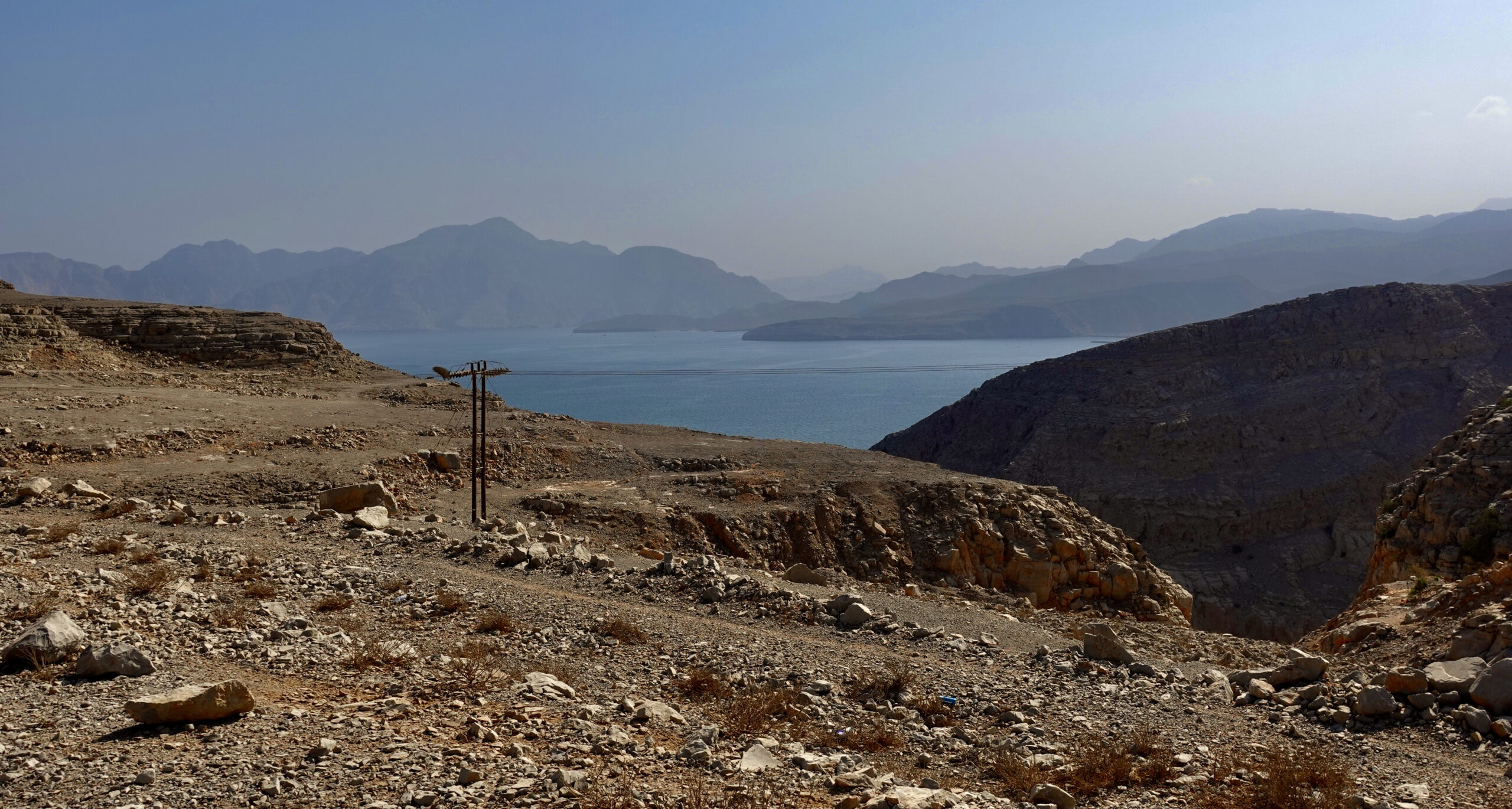
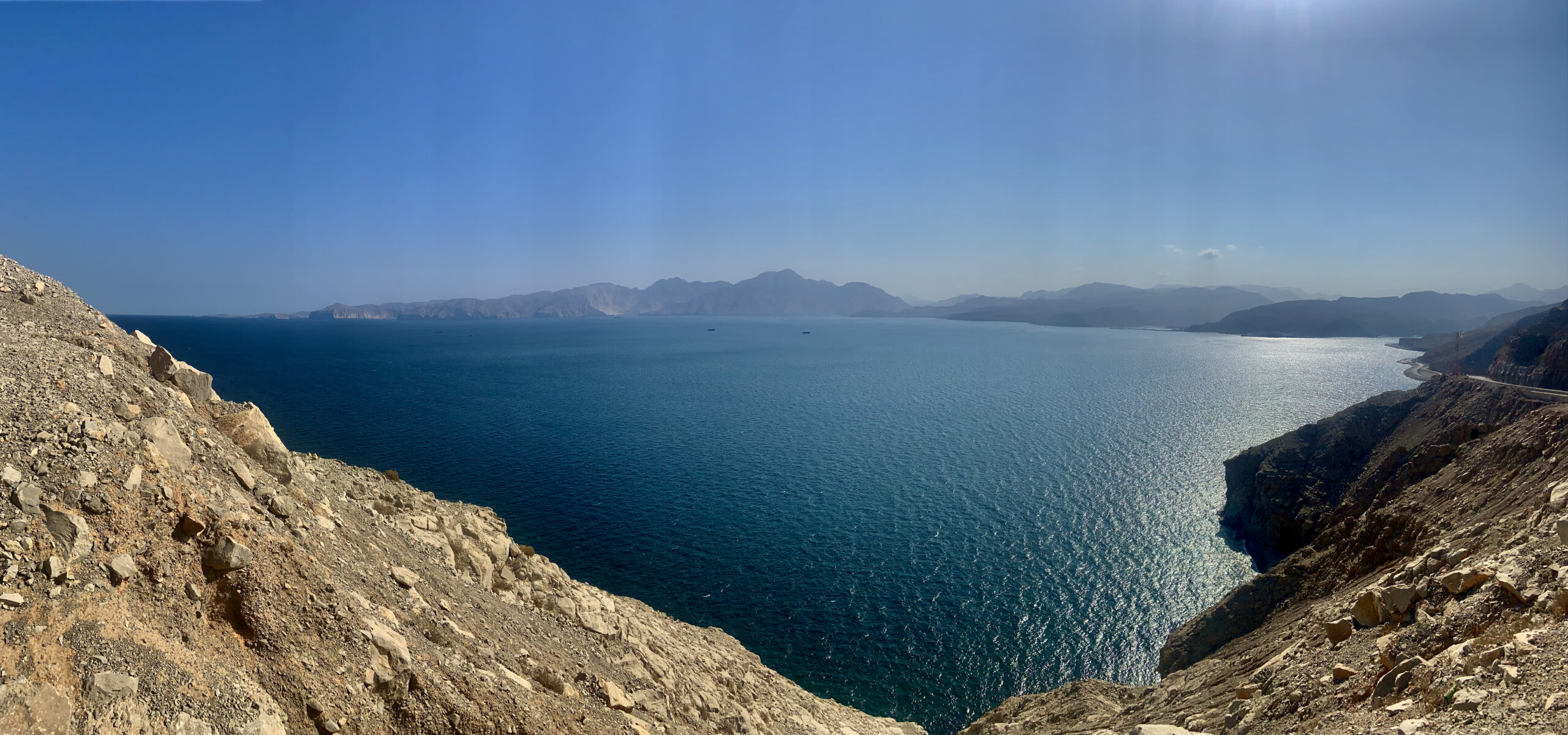
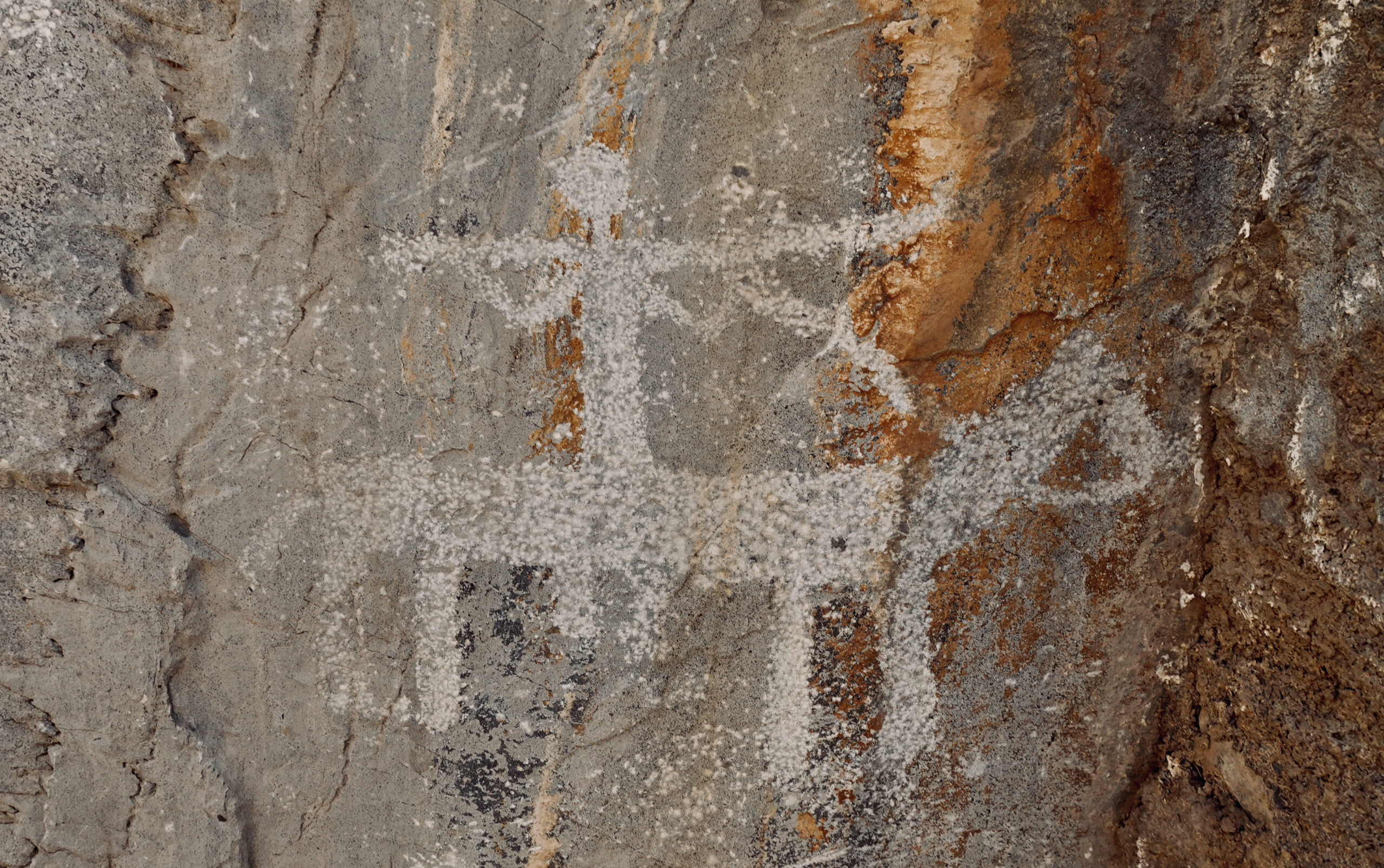
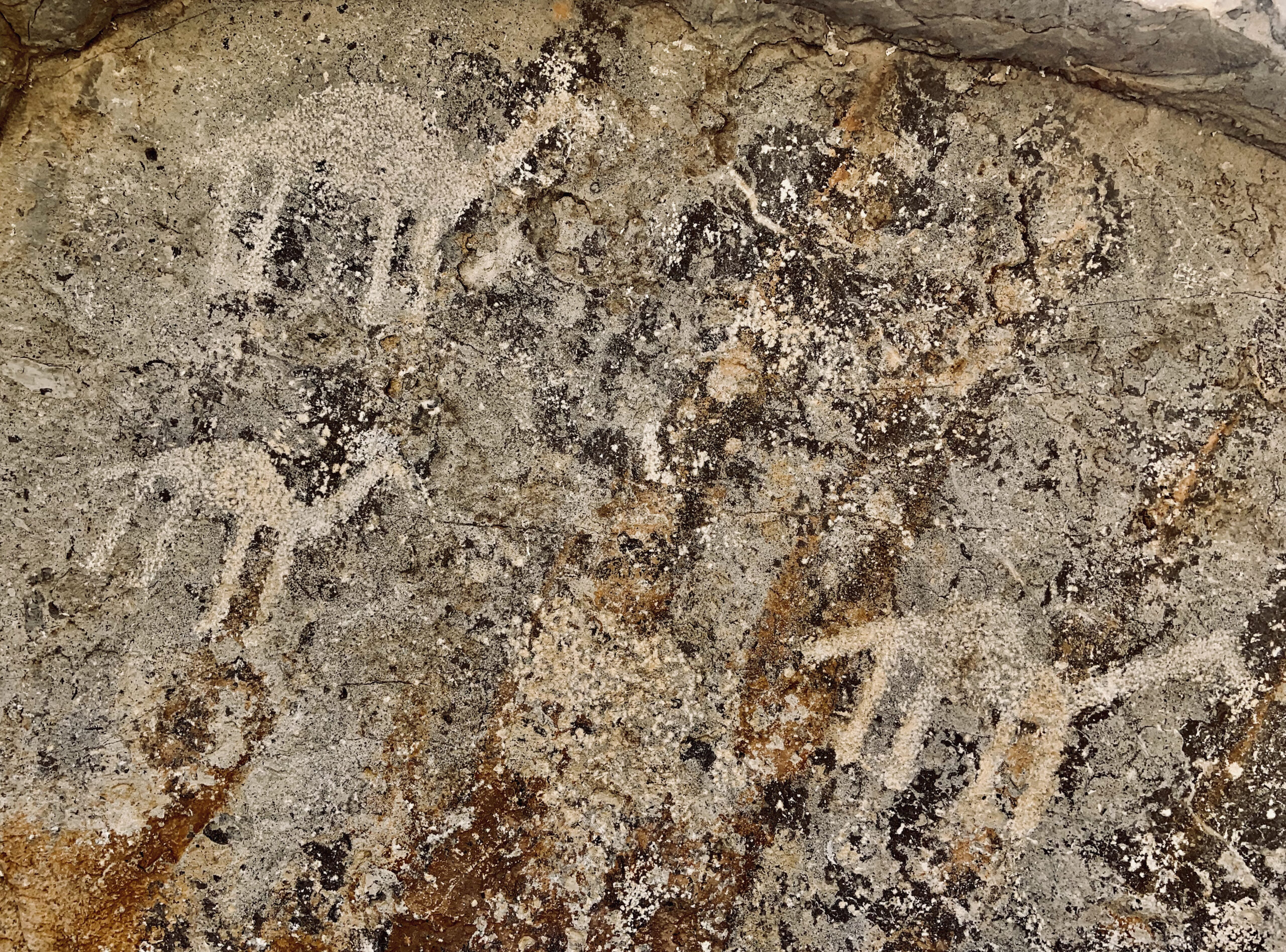
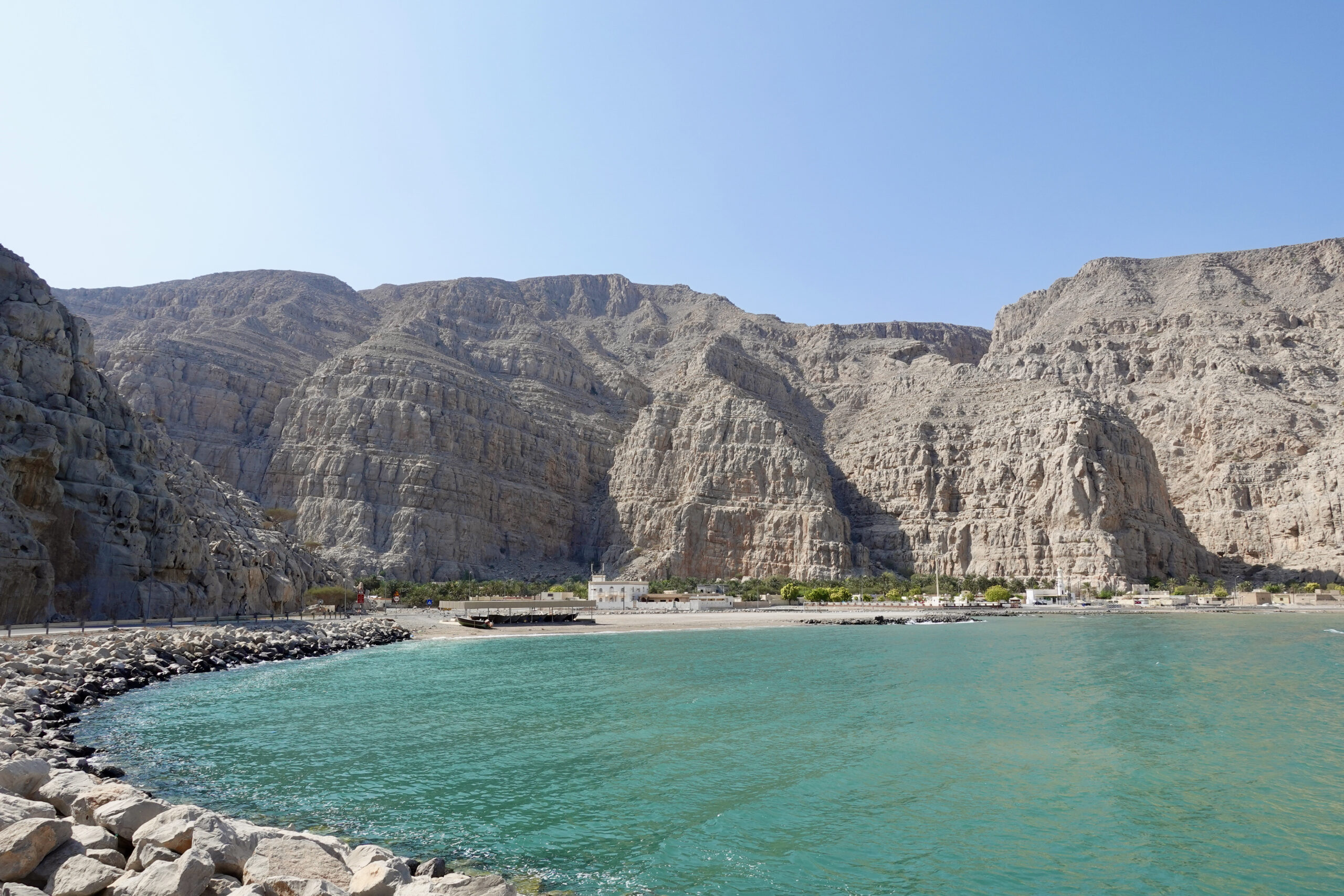
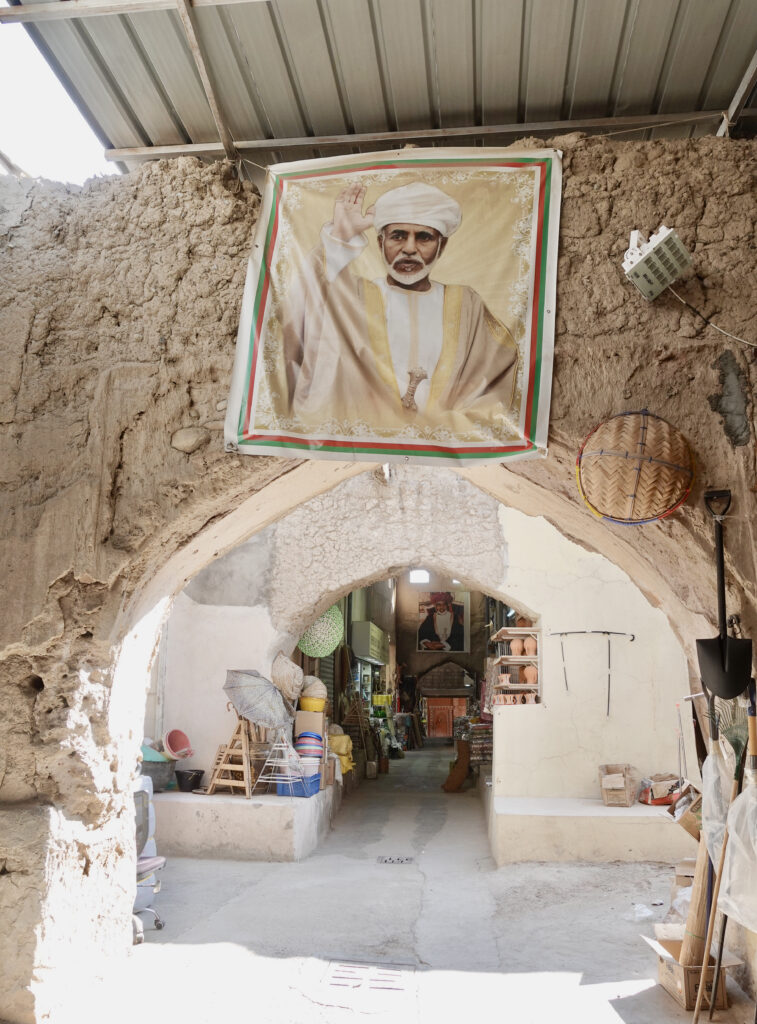
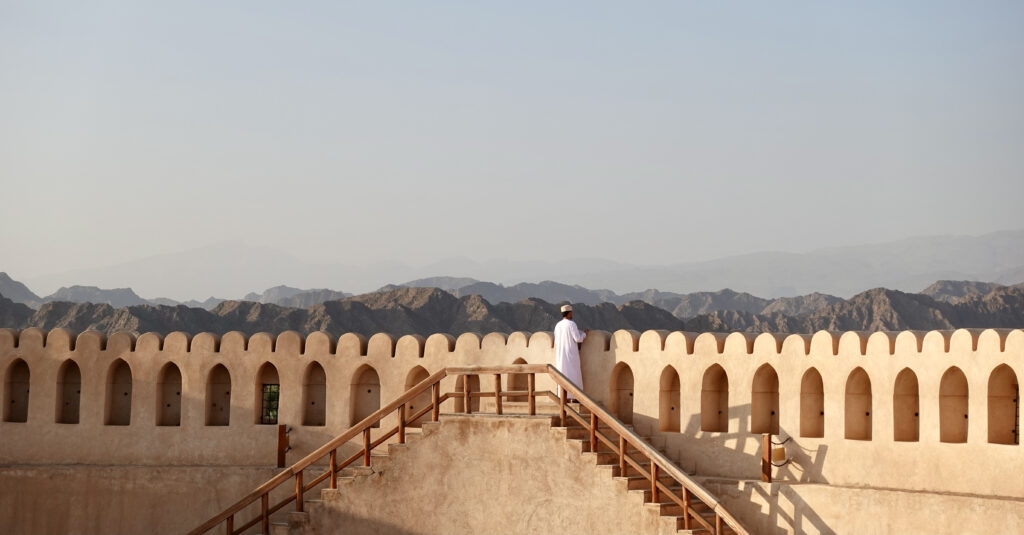
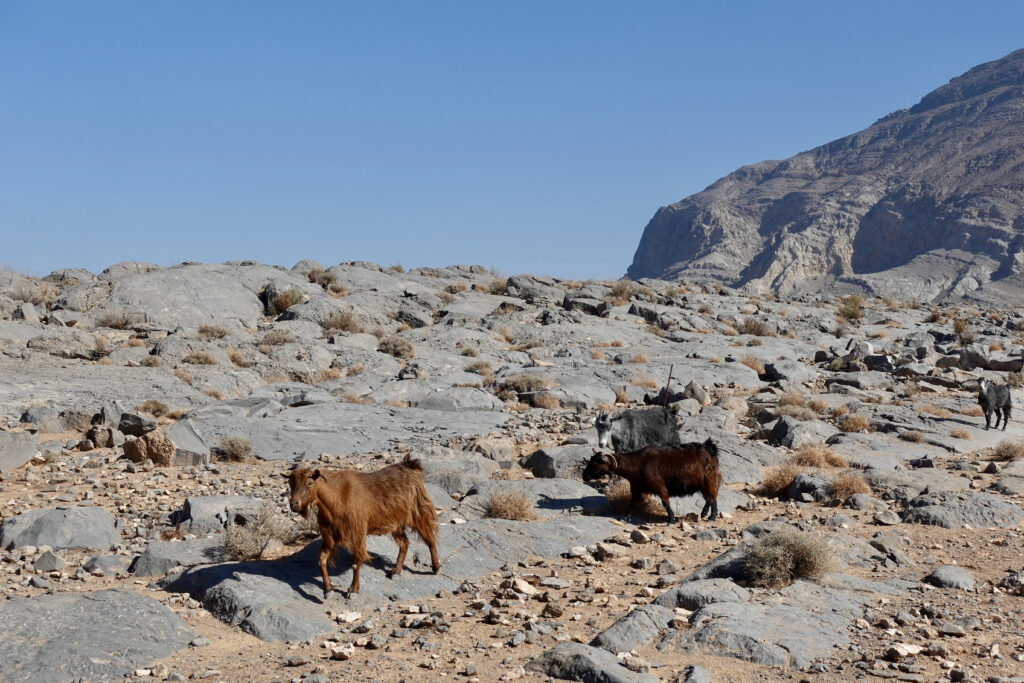

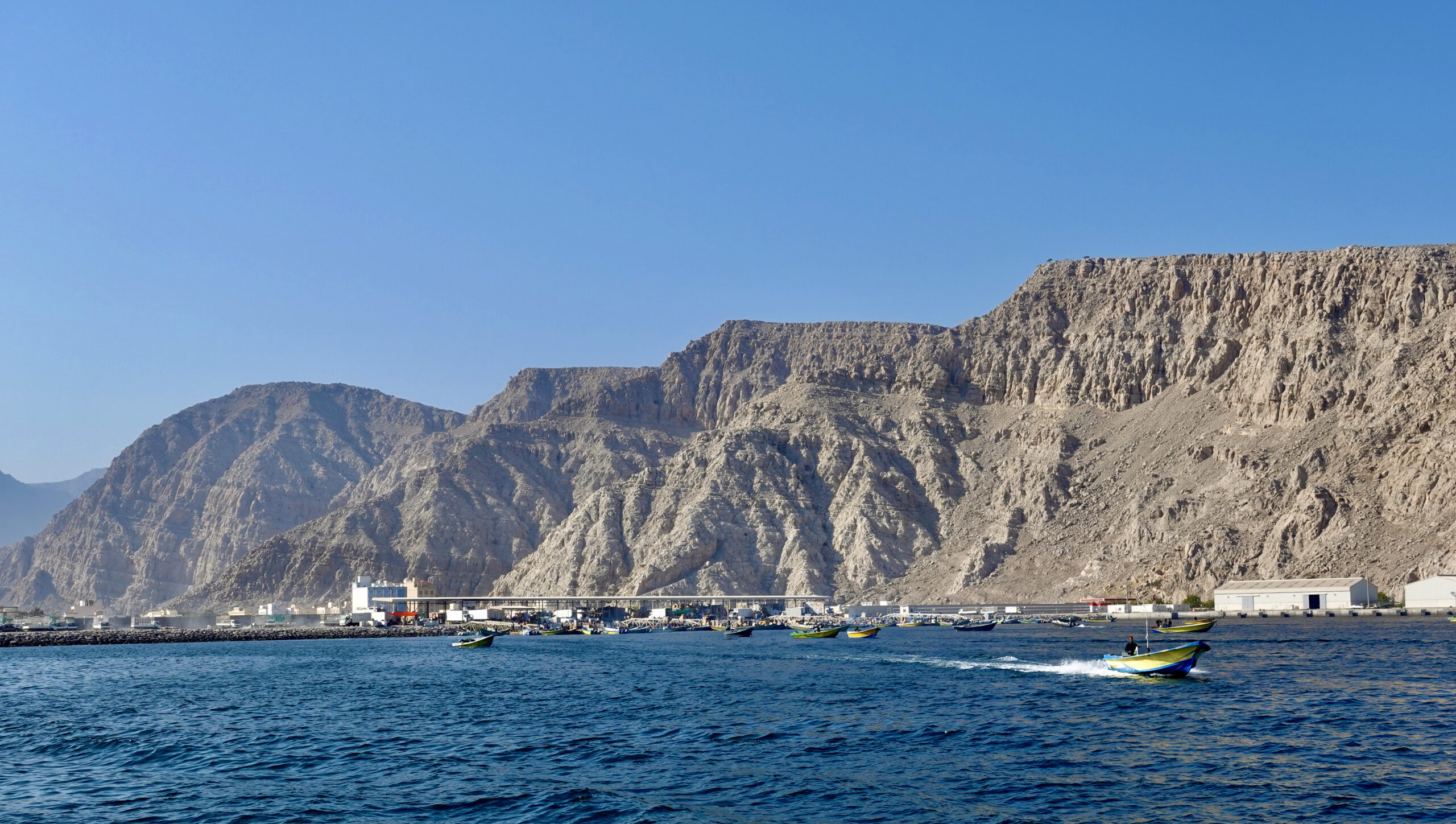
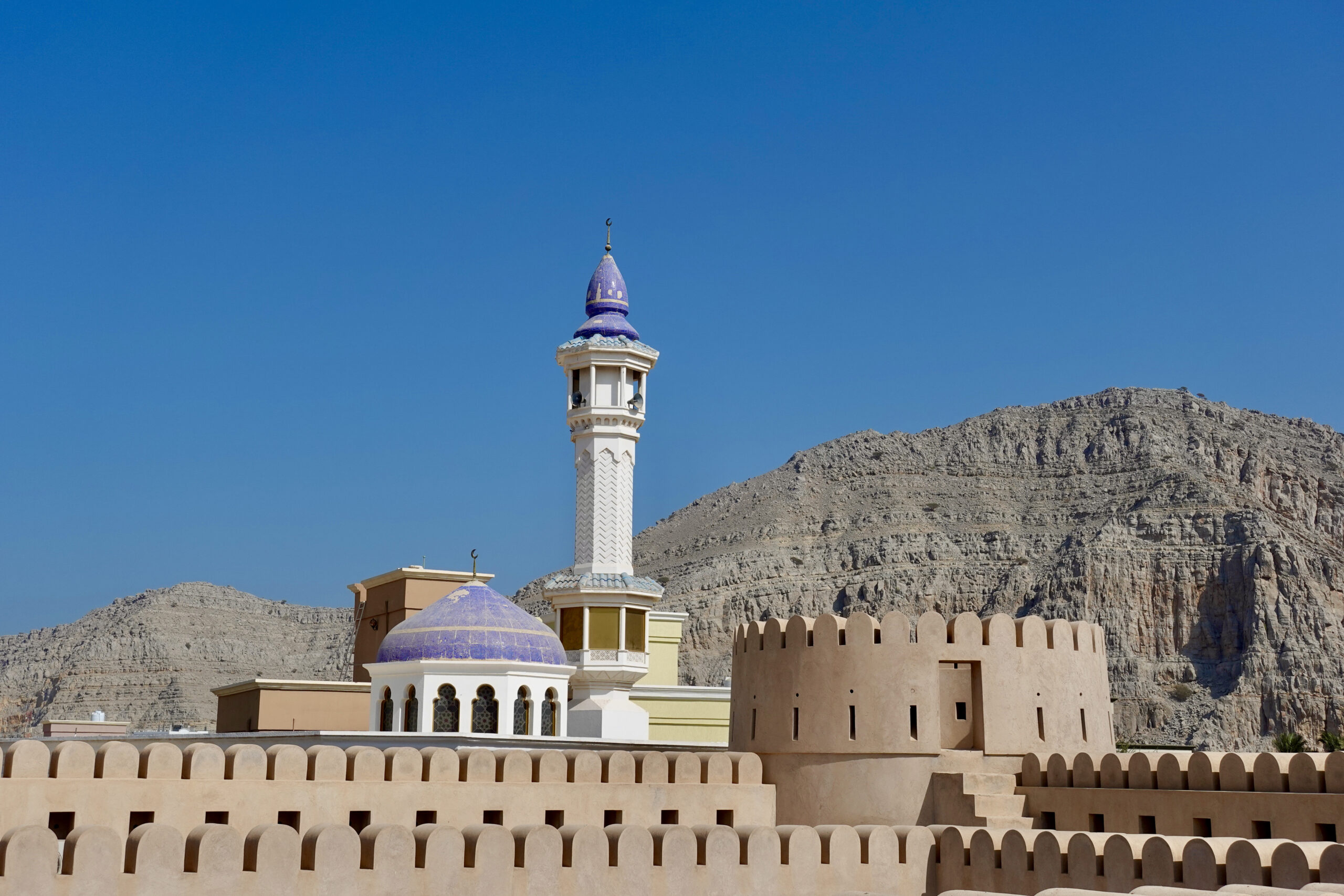
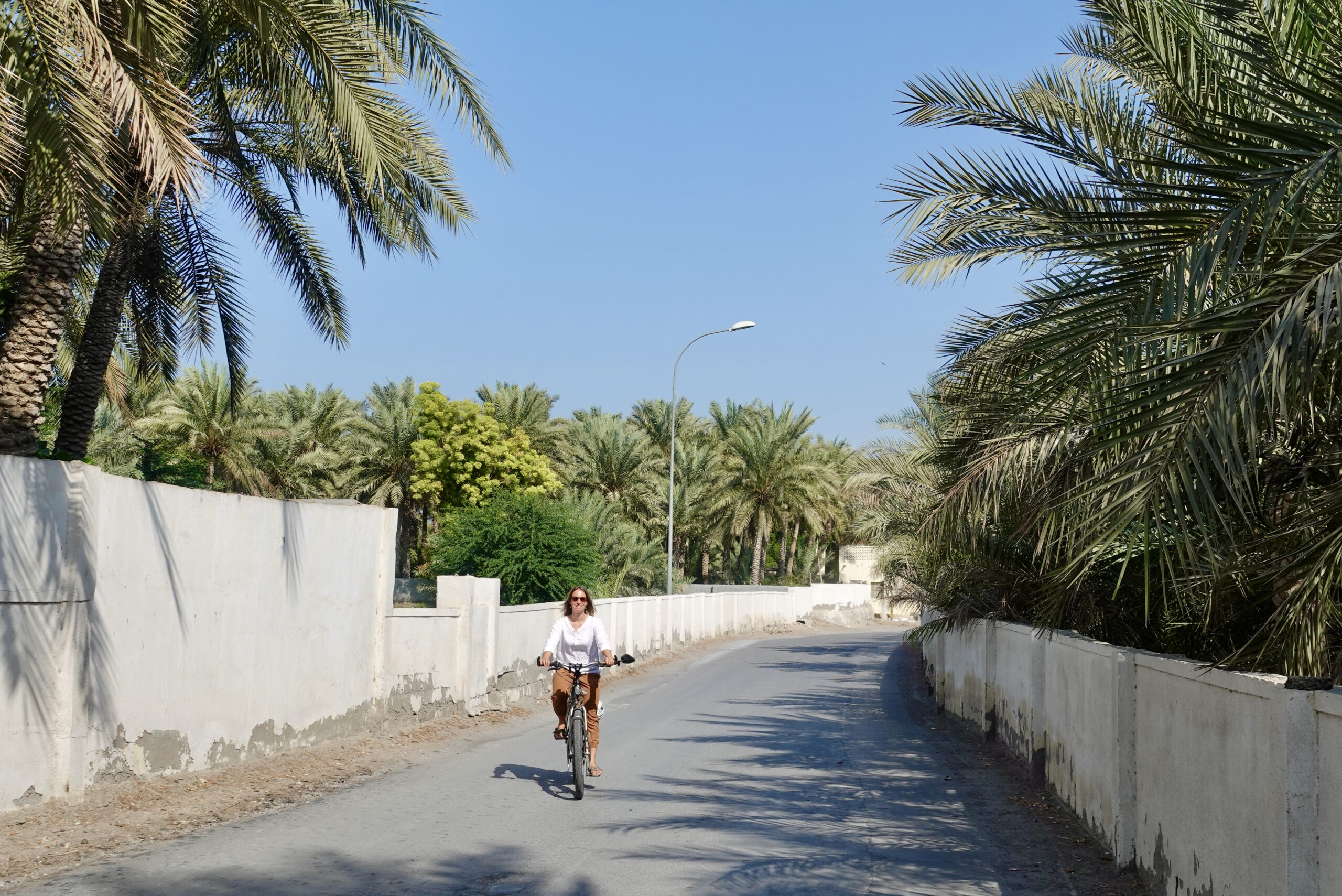

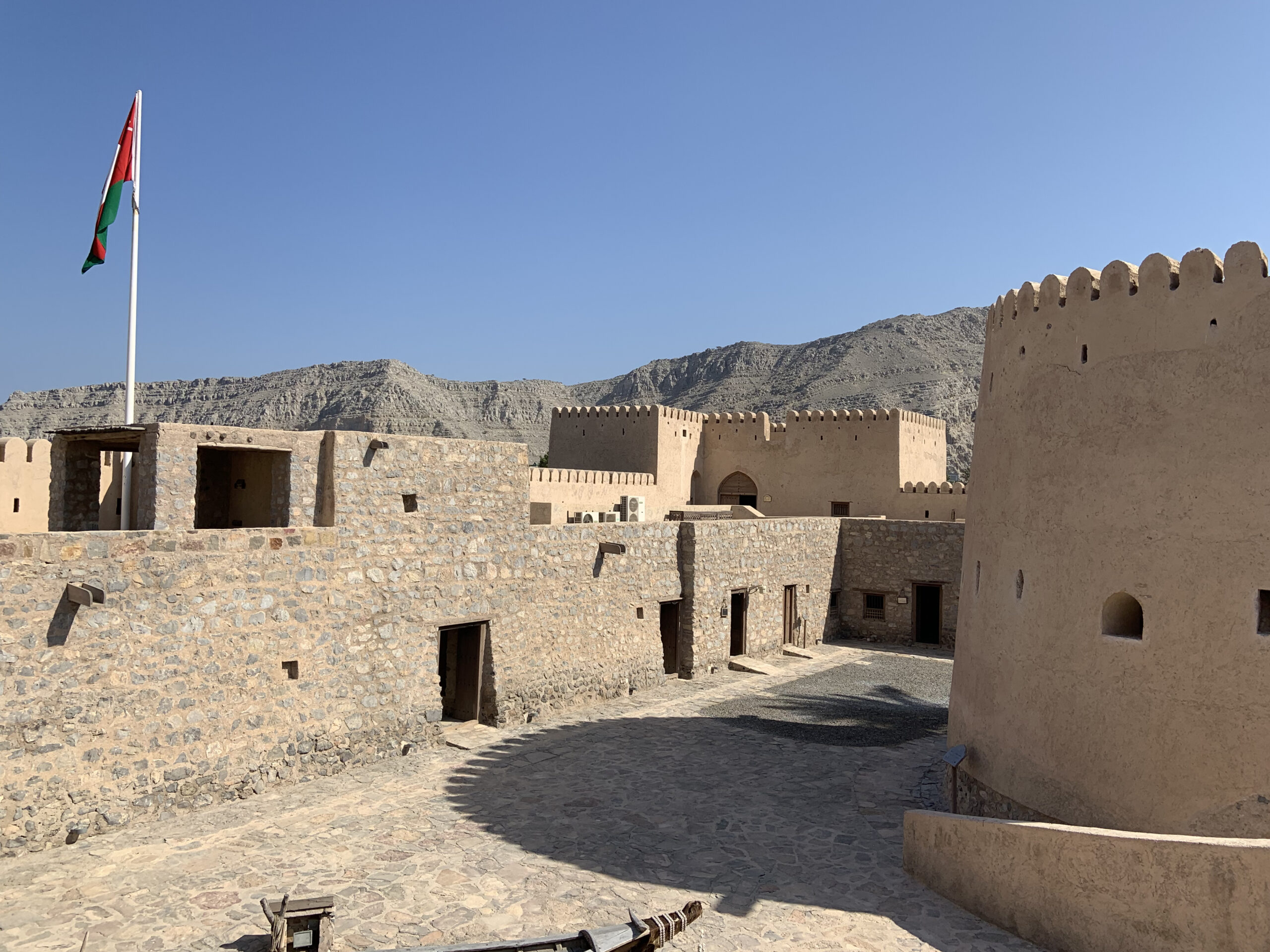
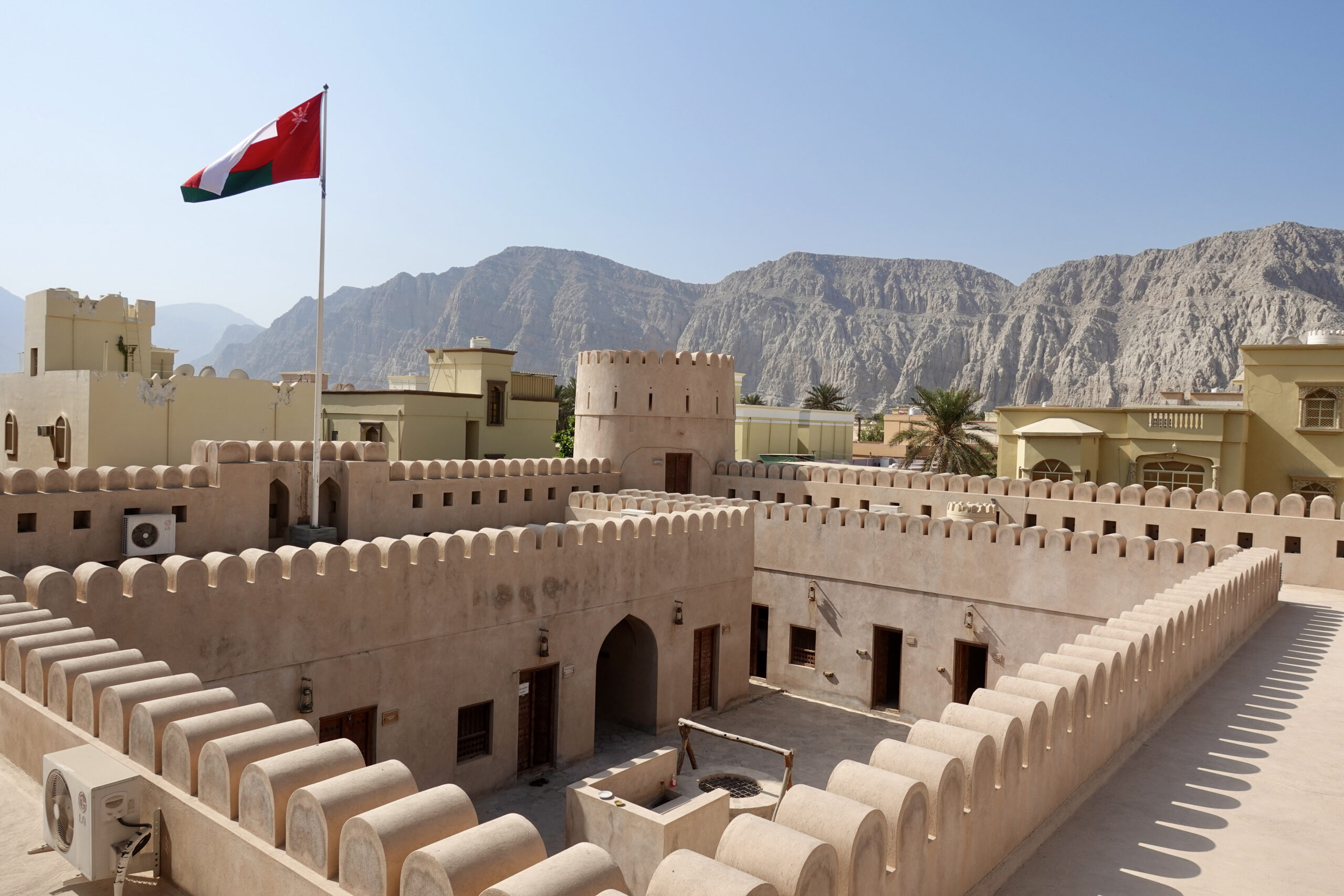

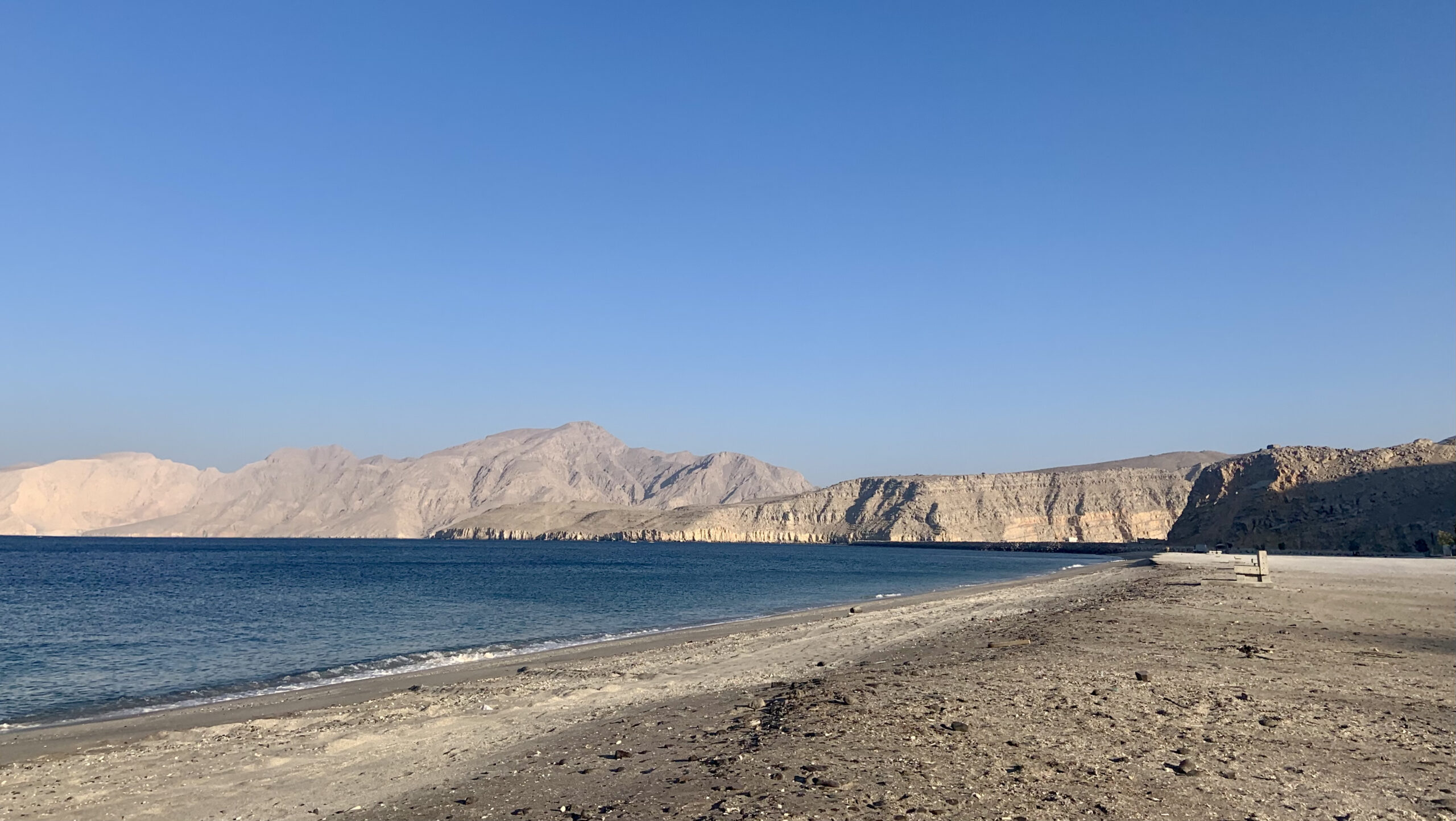
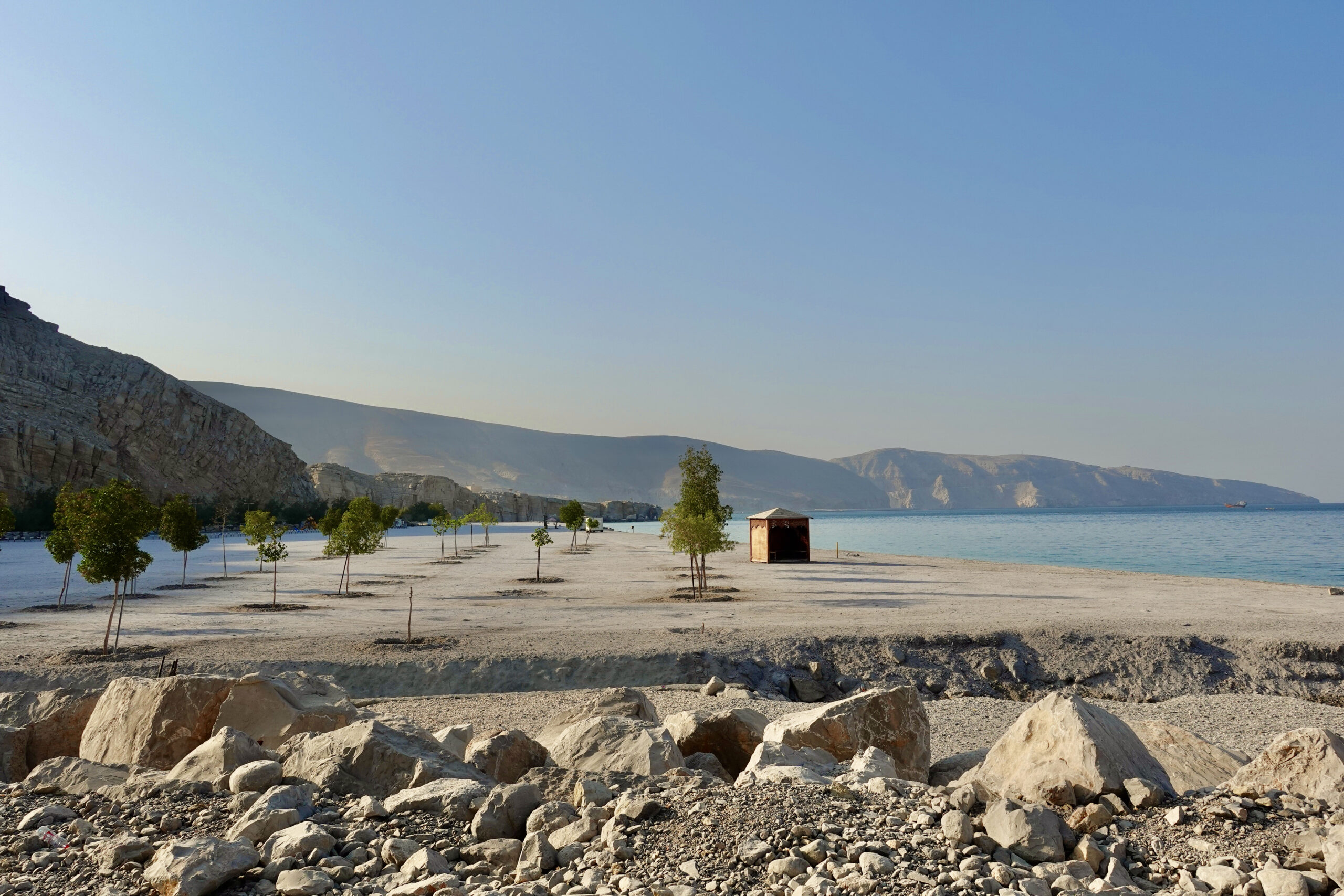

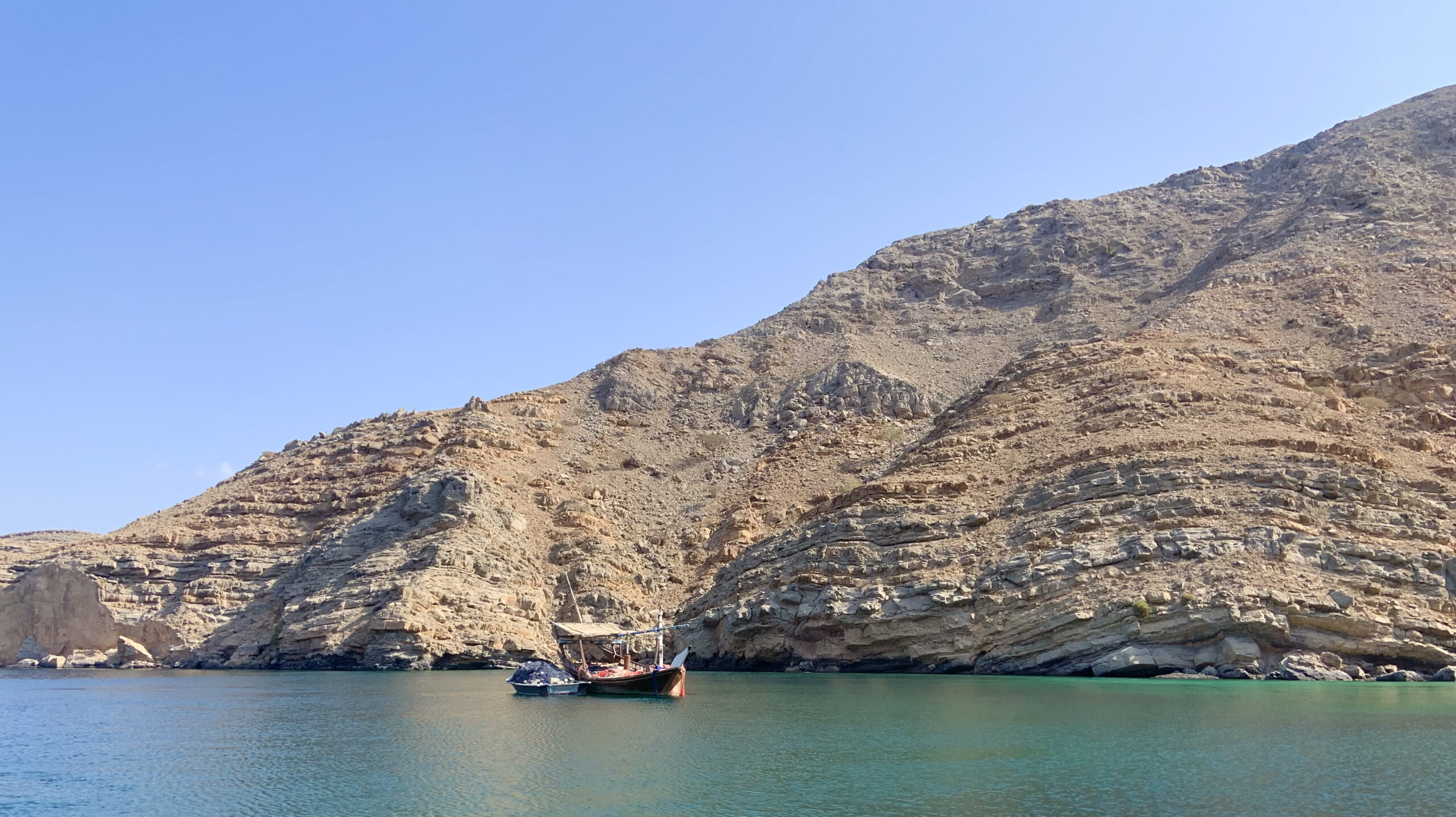
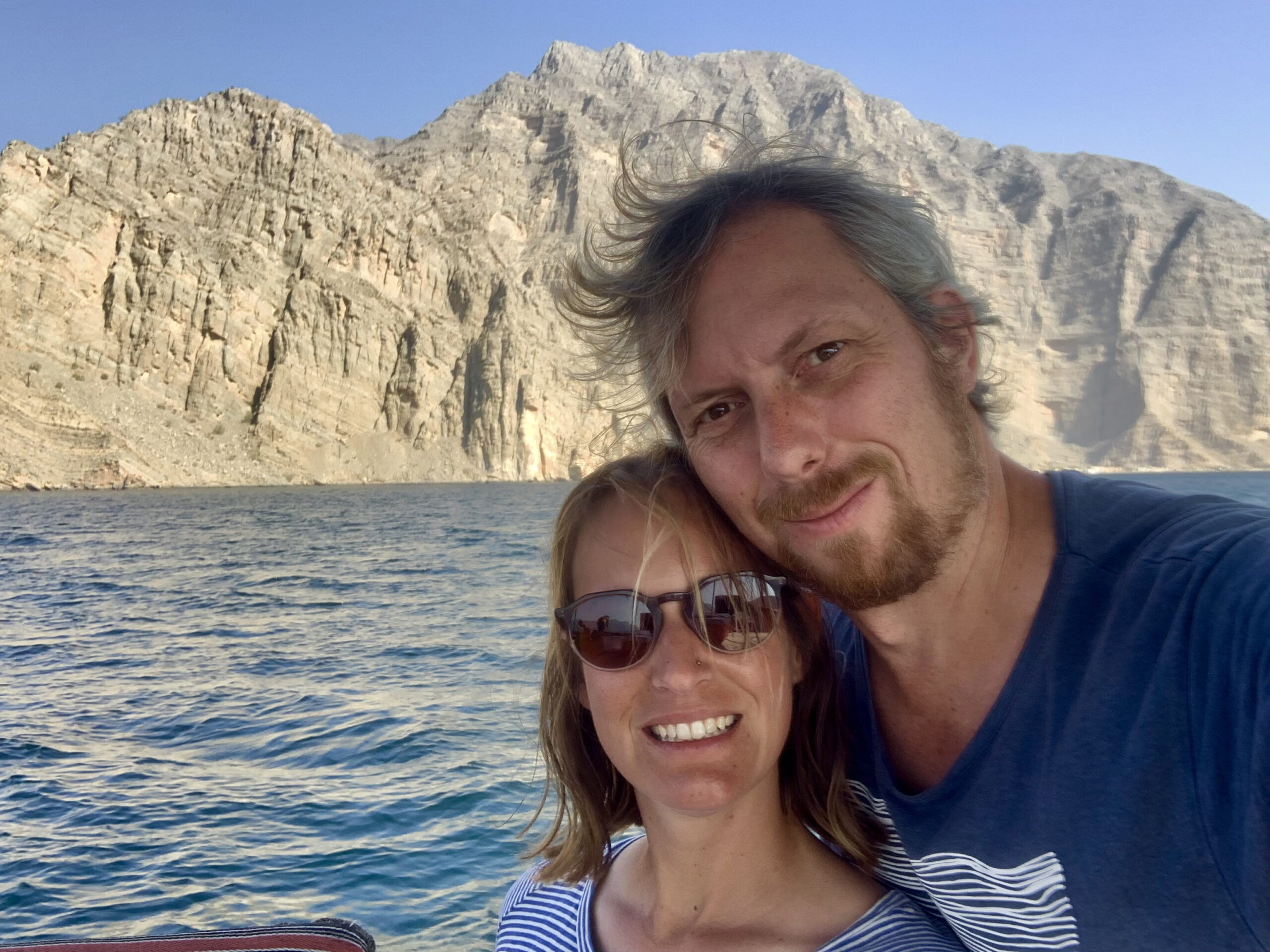



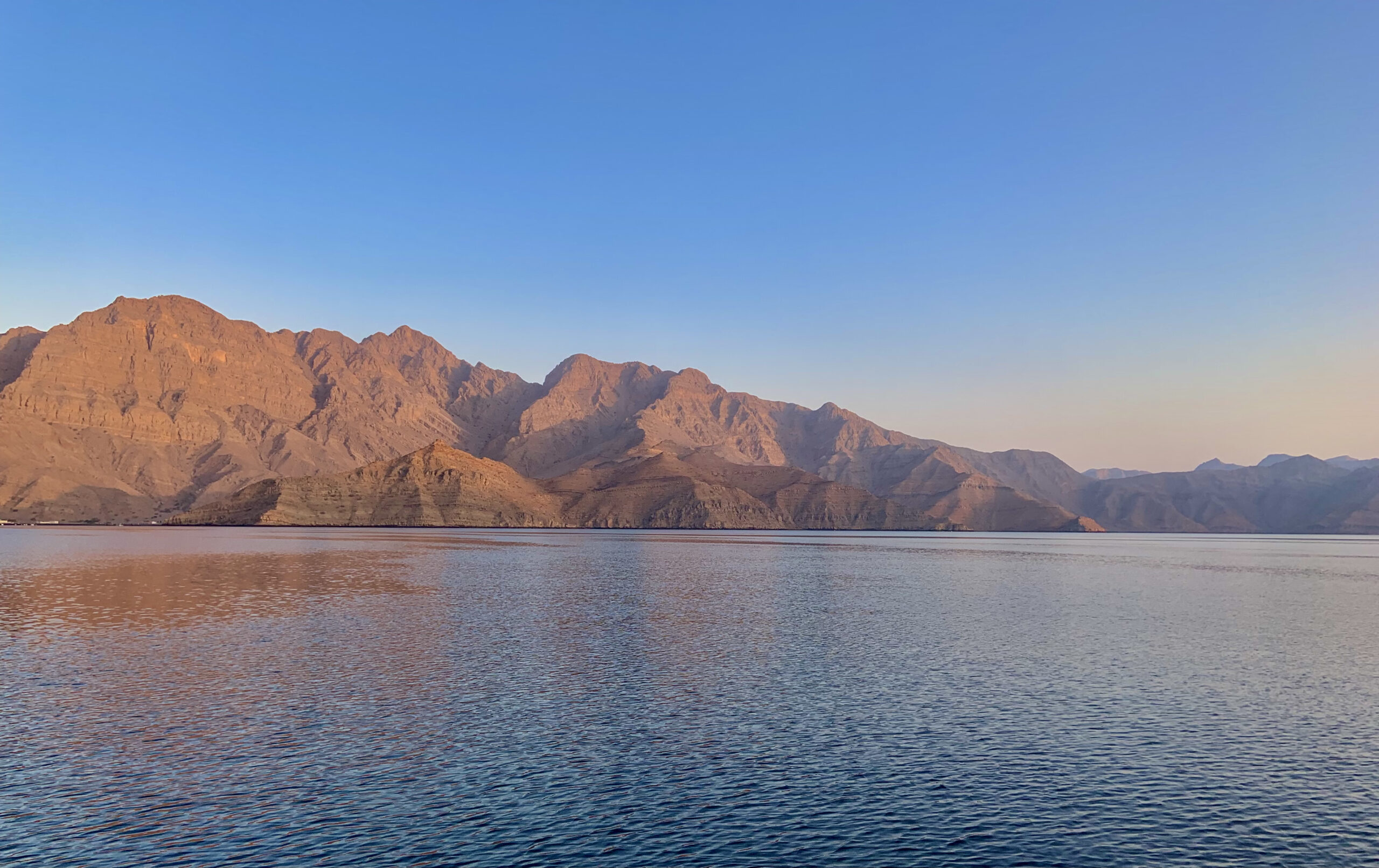
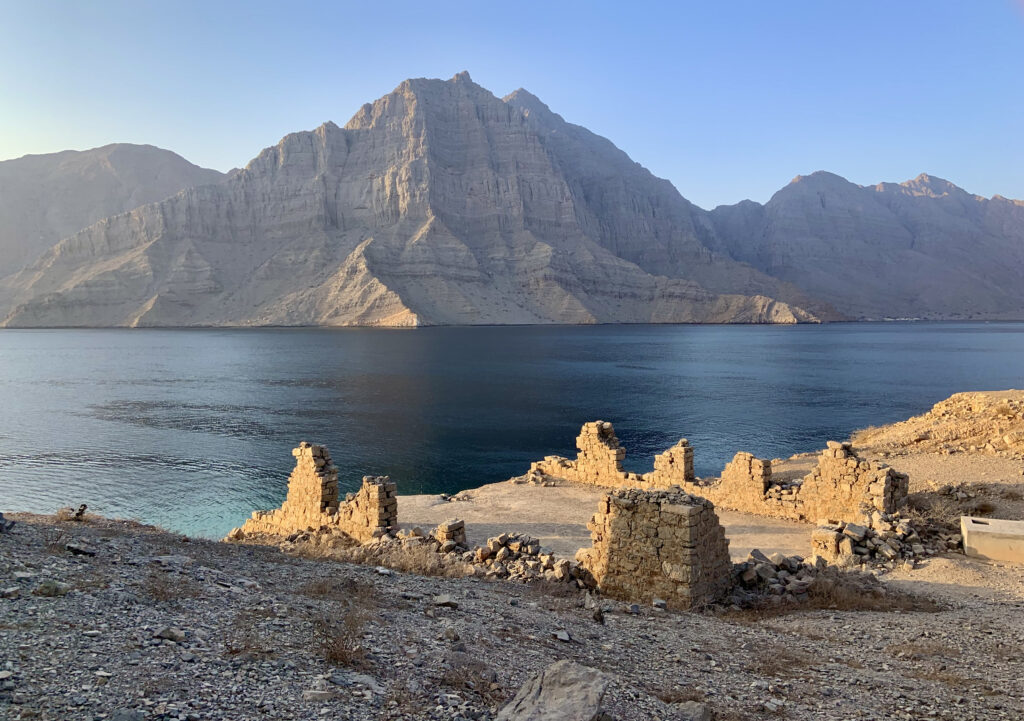
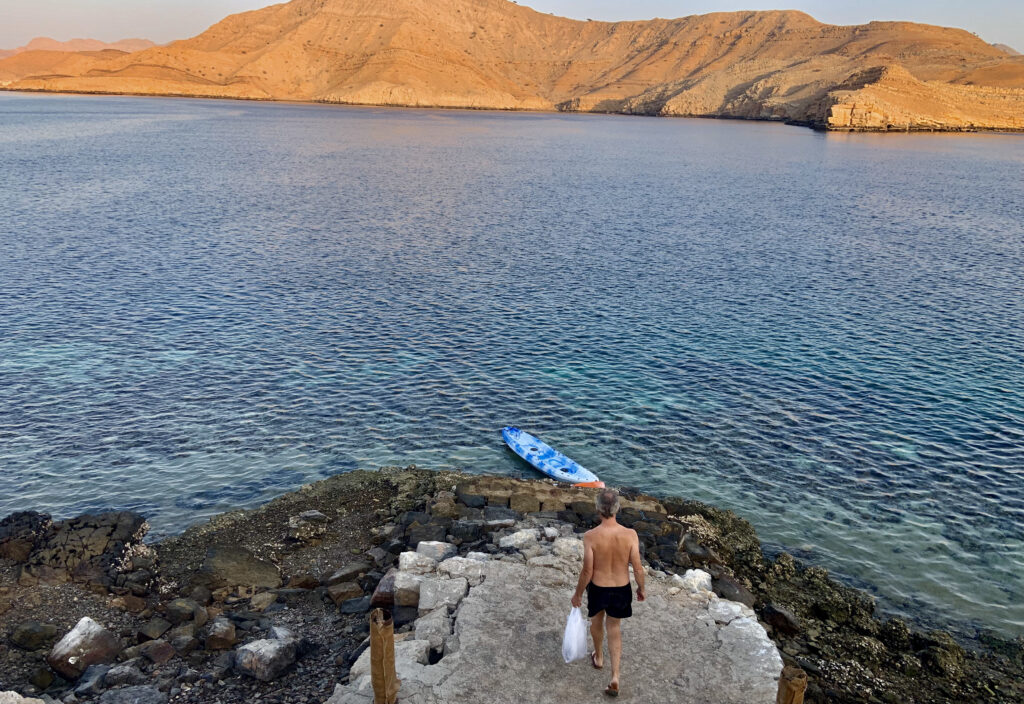
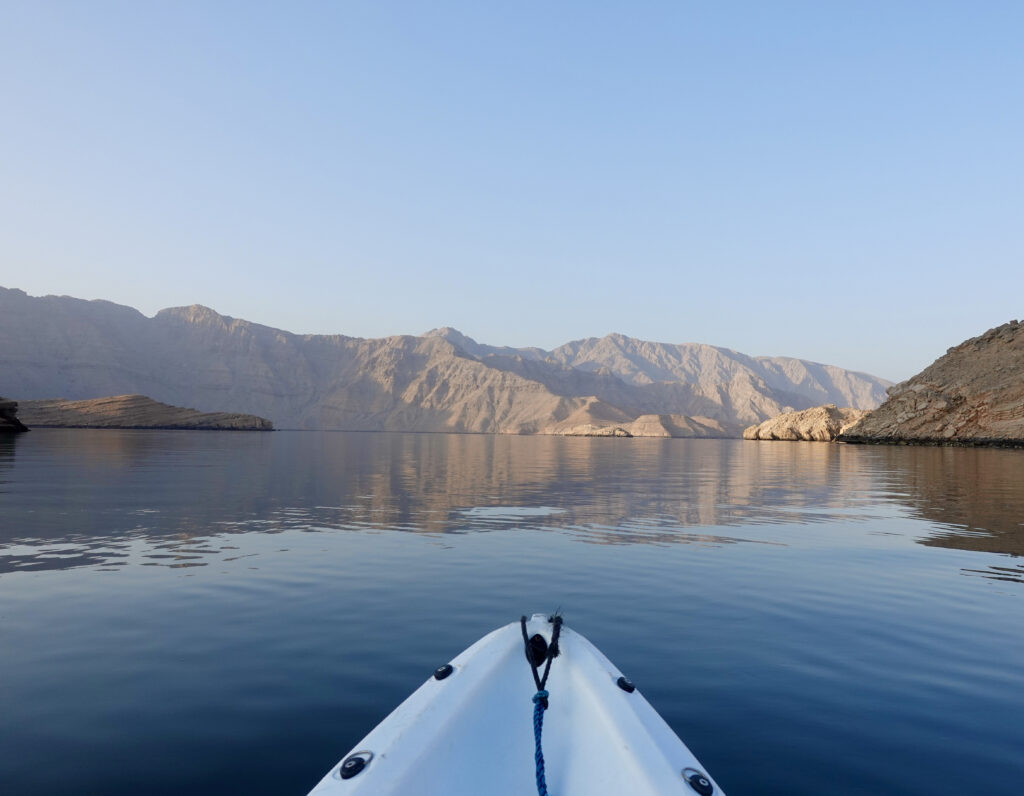


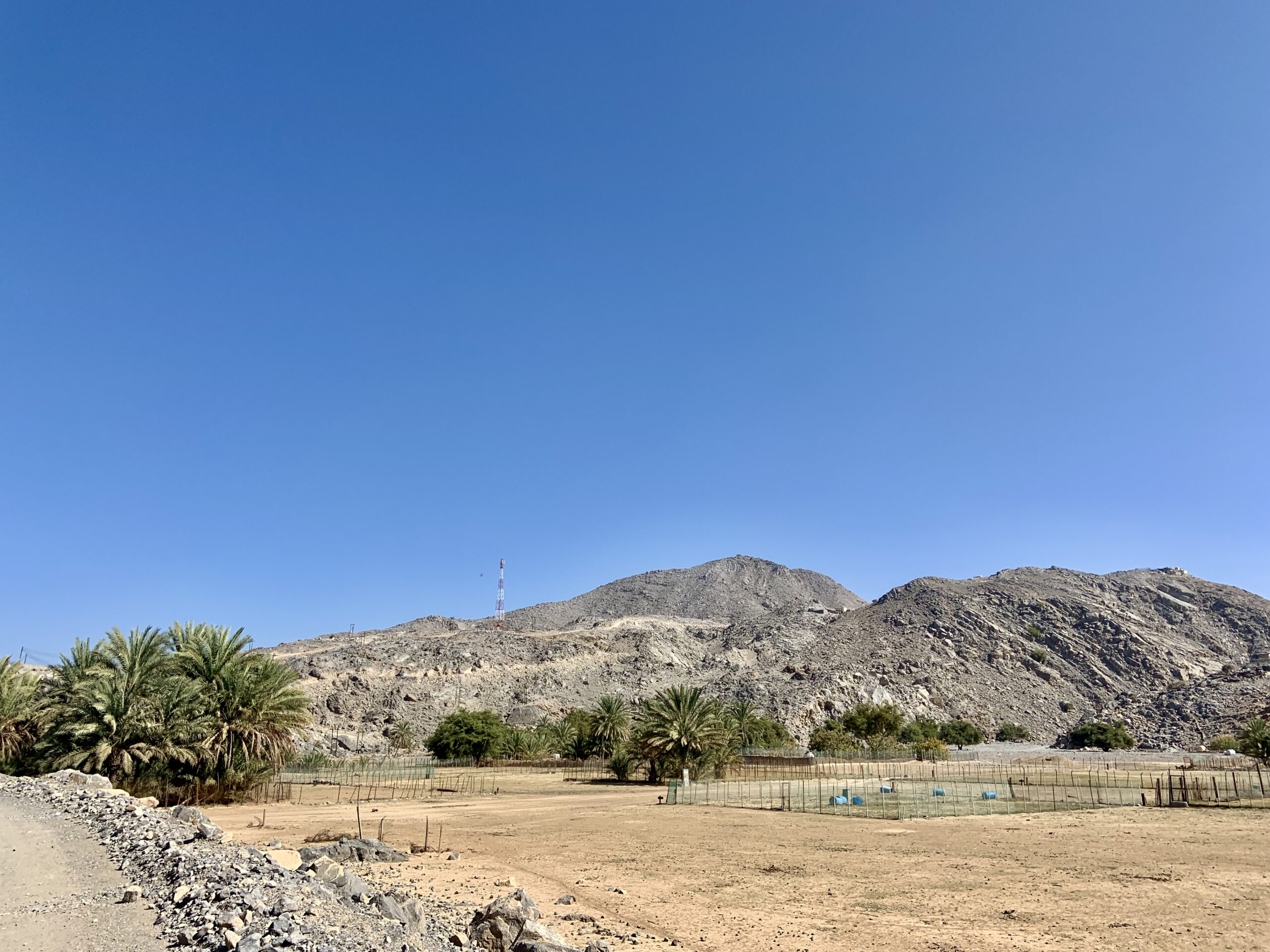
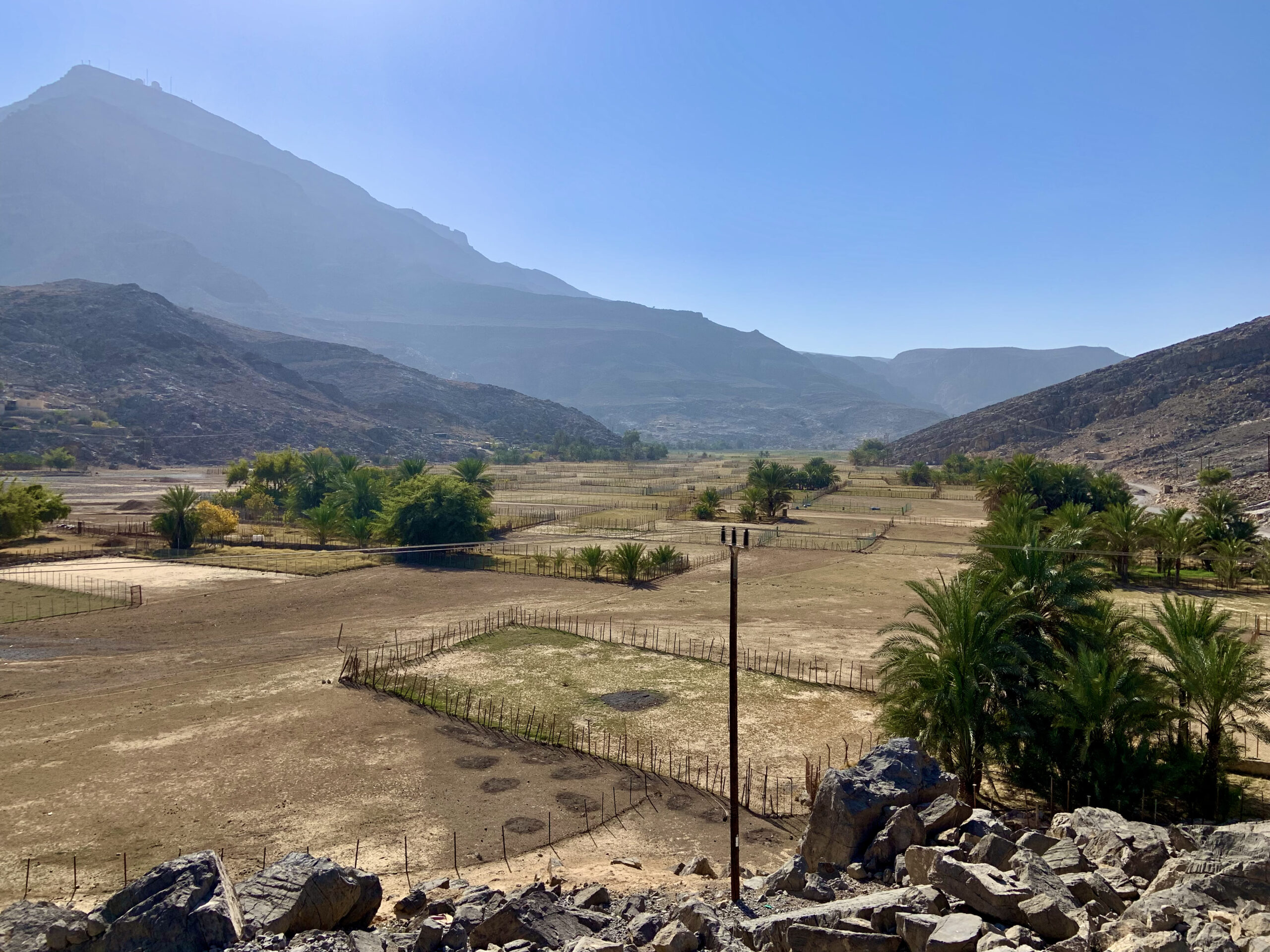
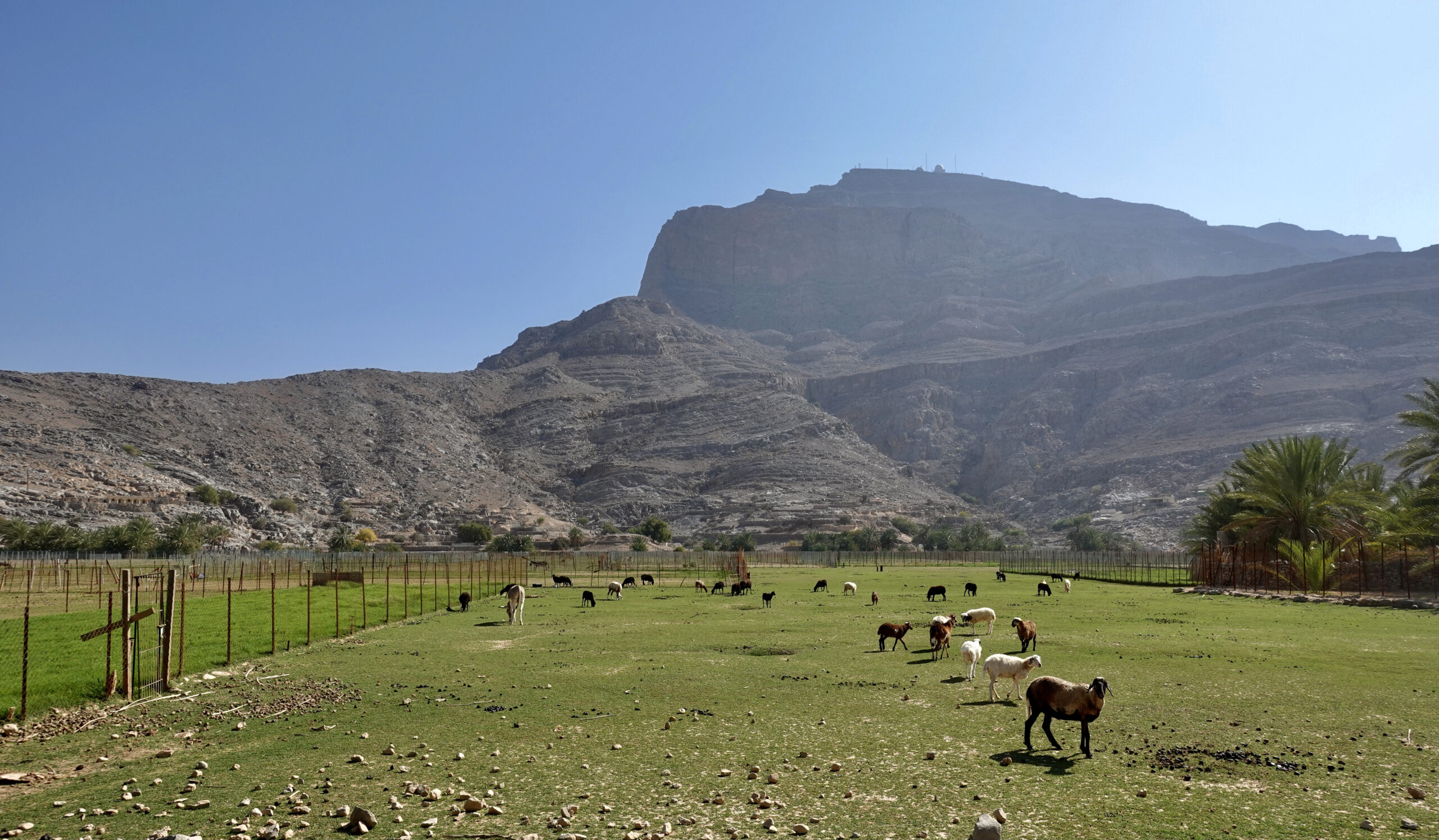
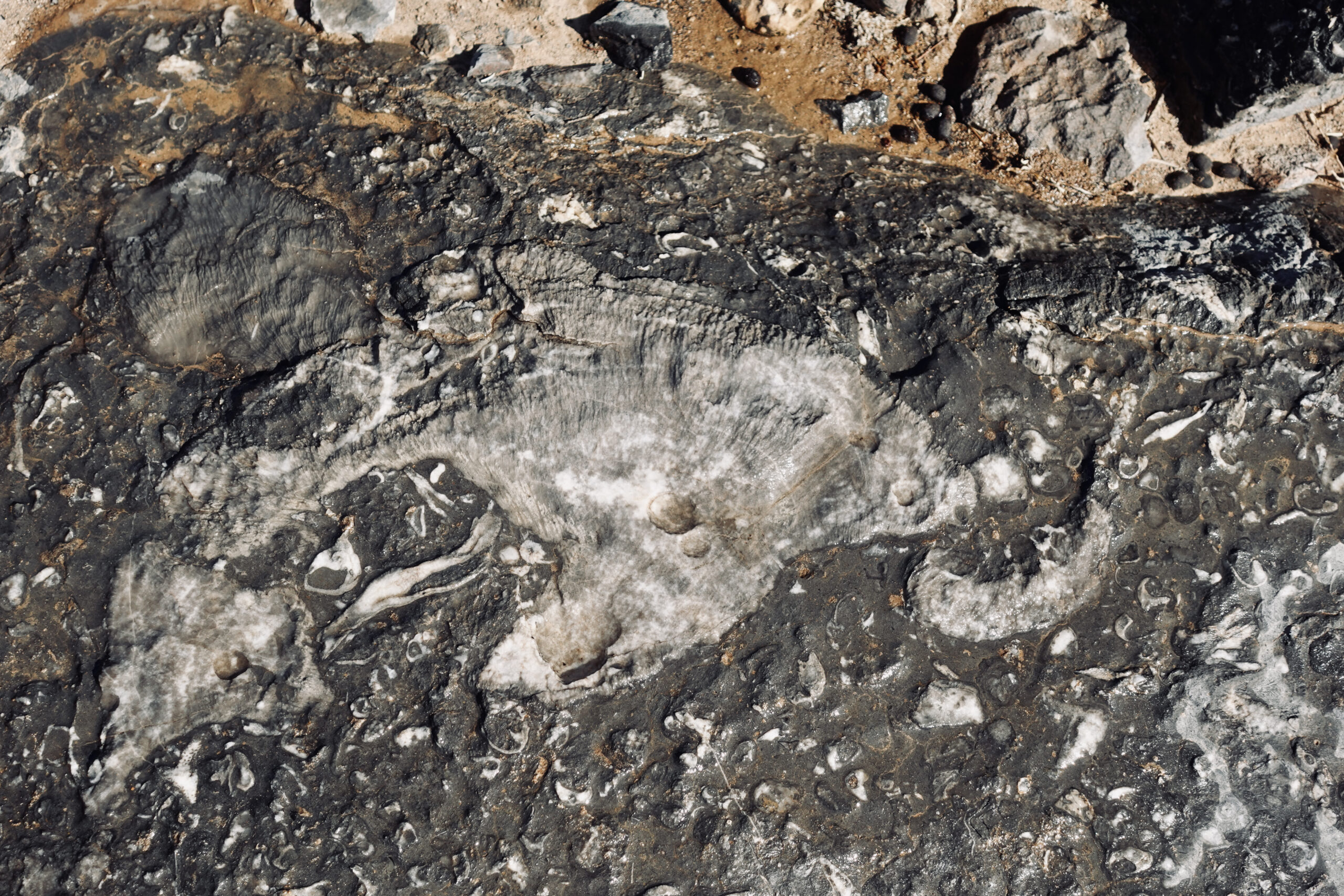
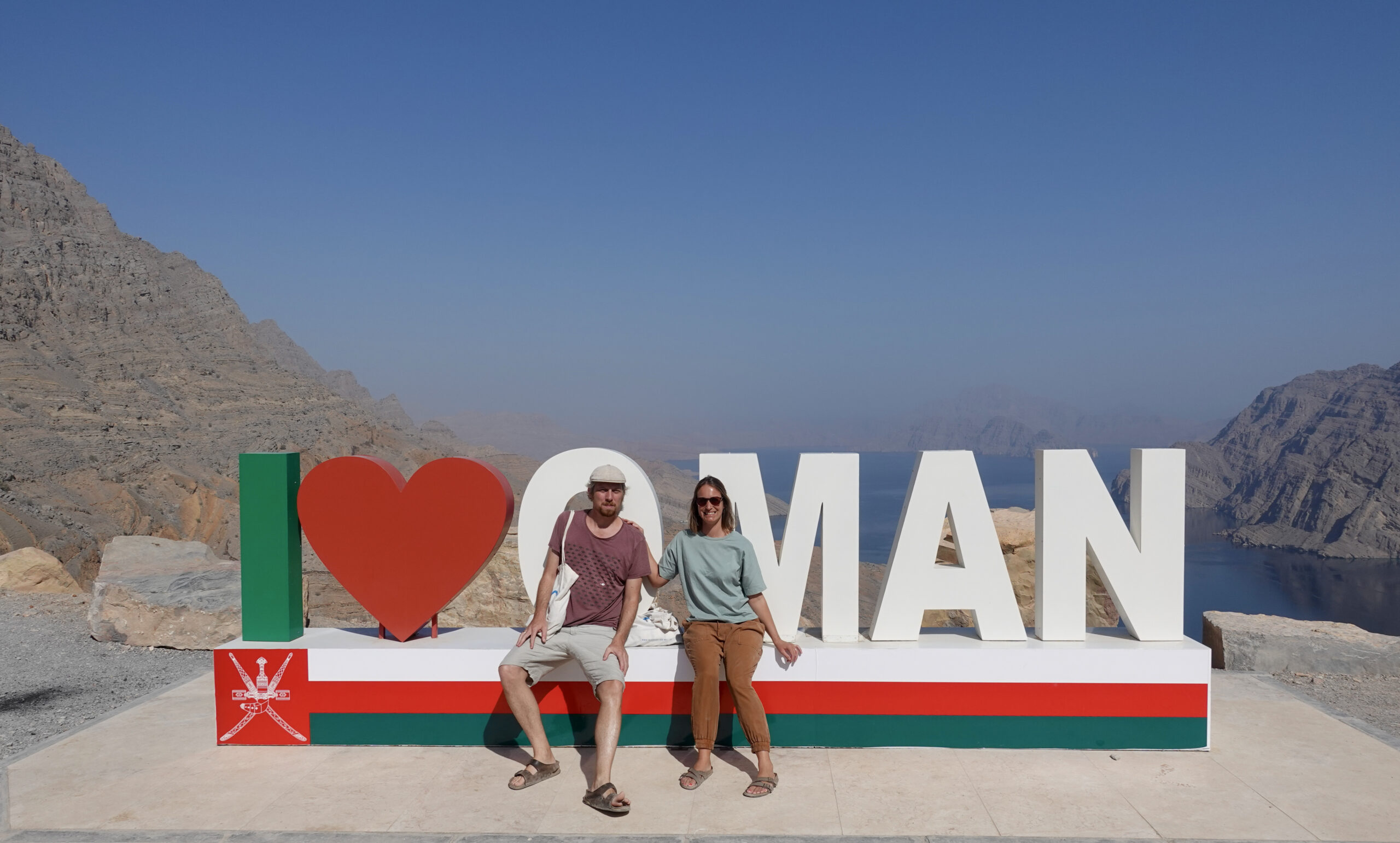
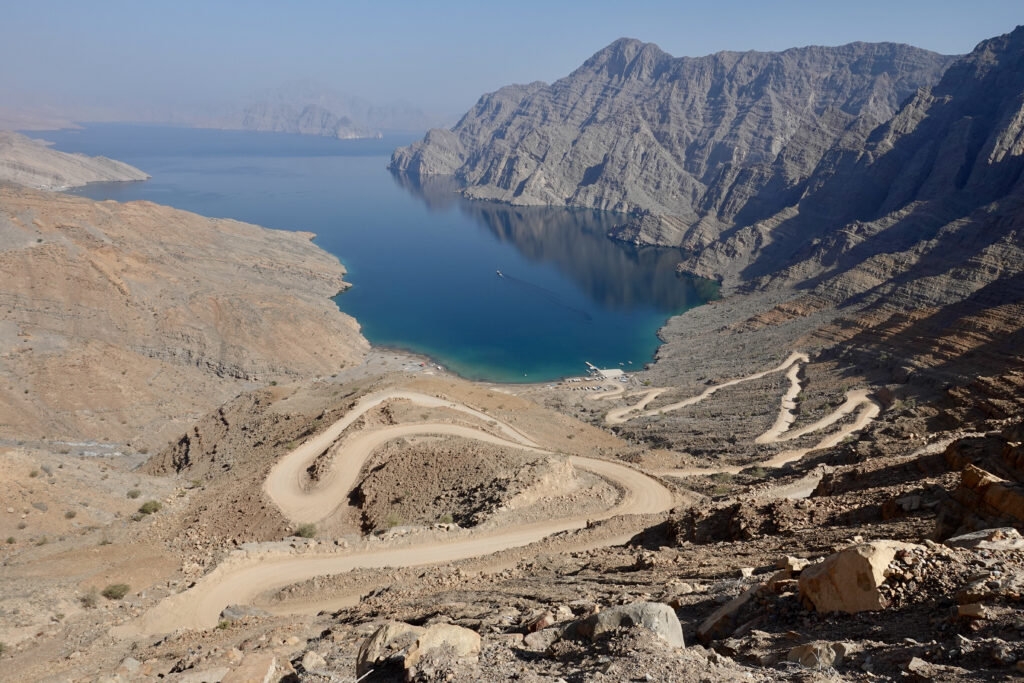

Leave a Reply